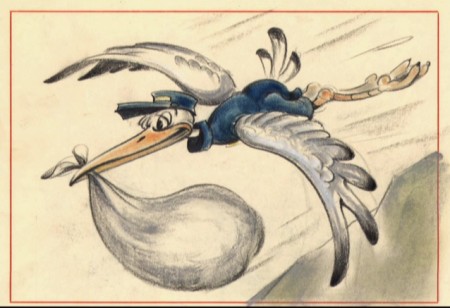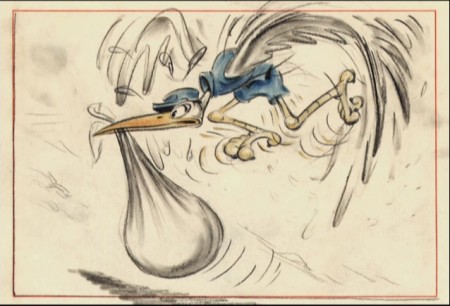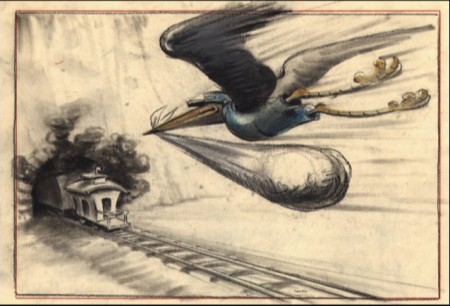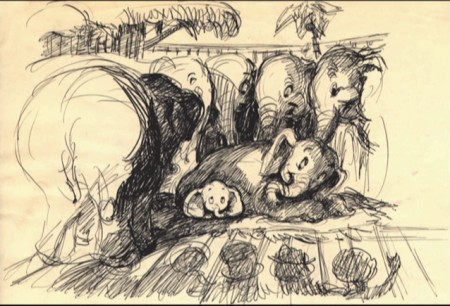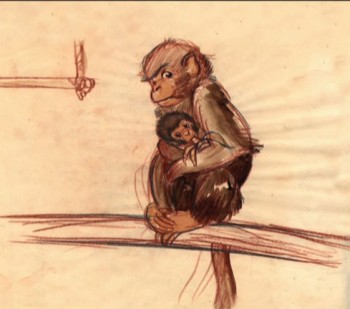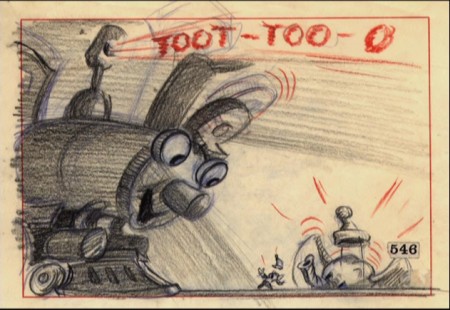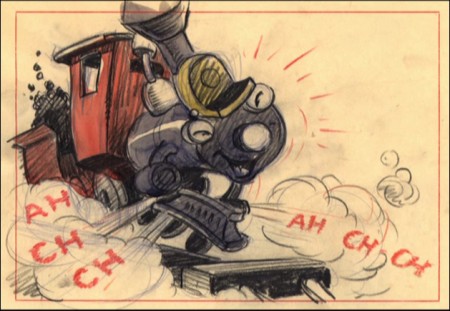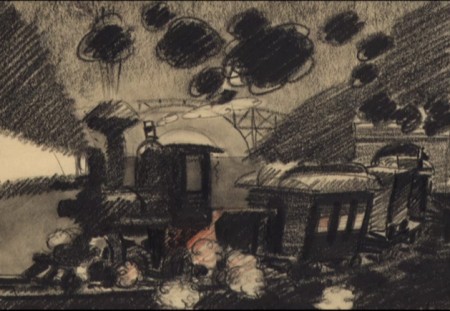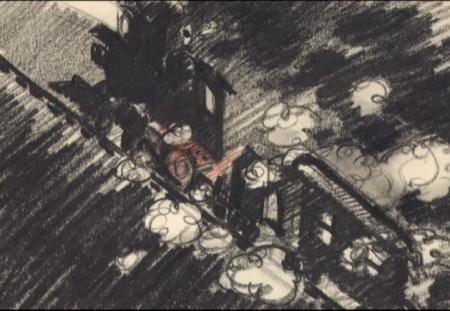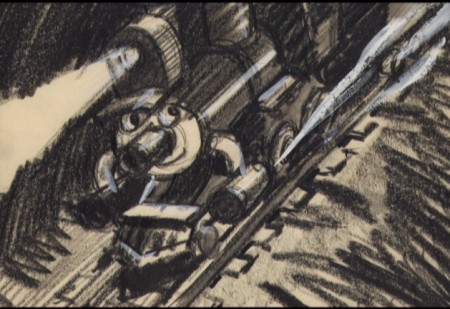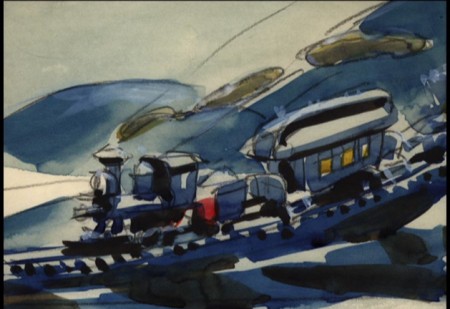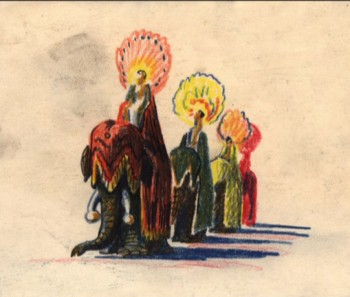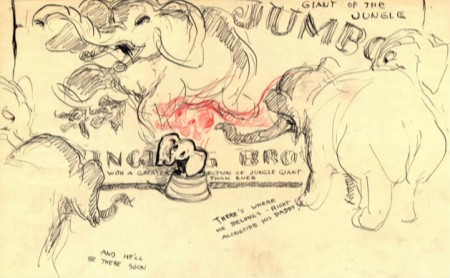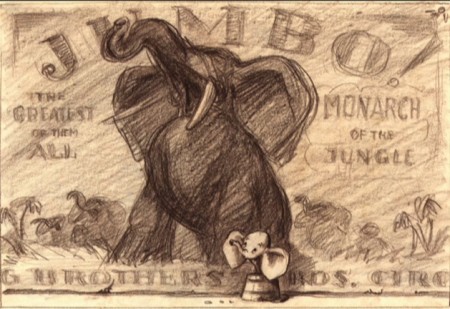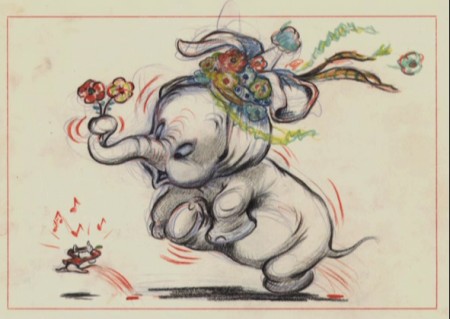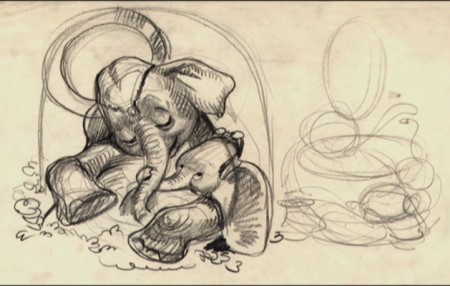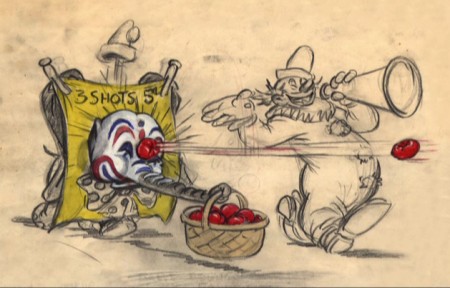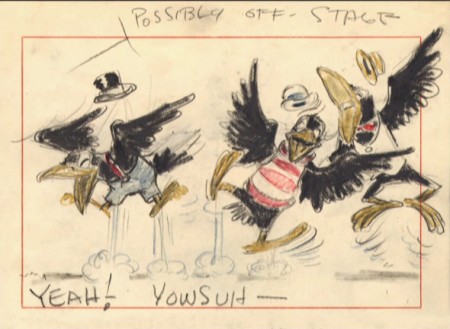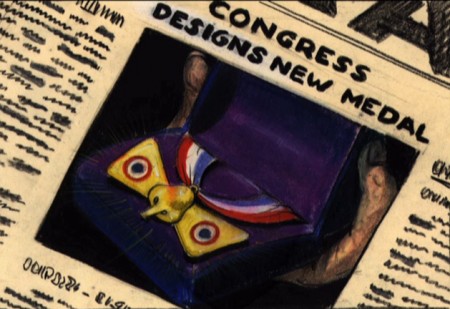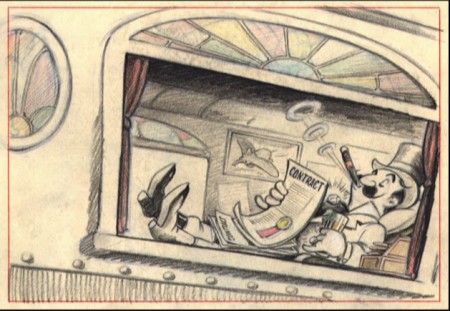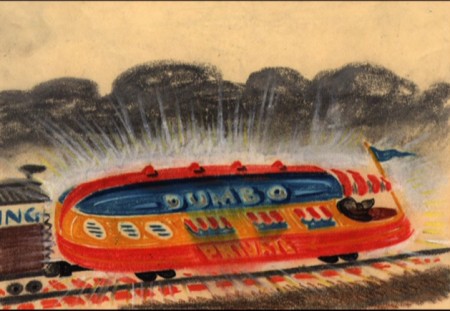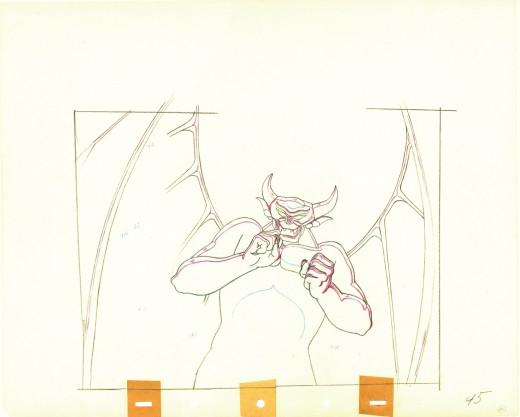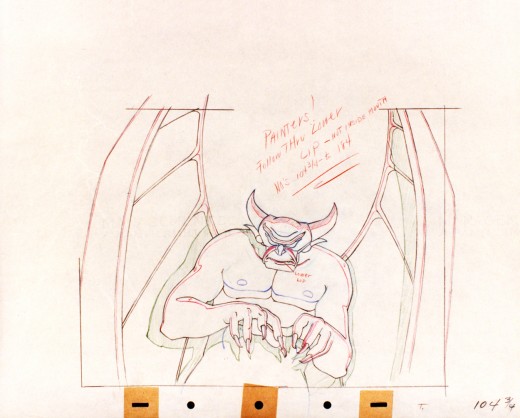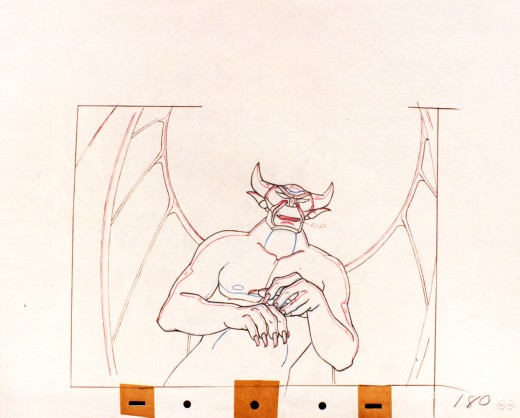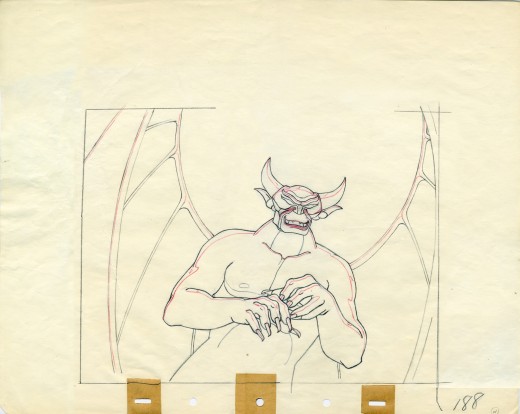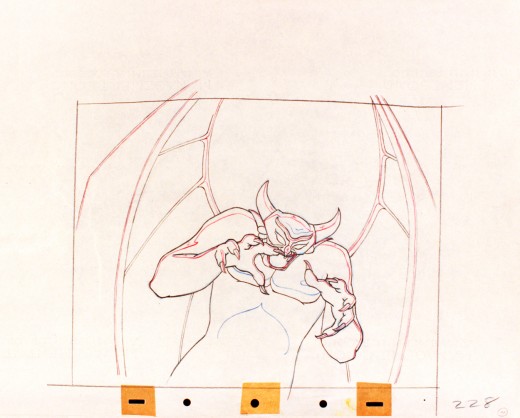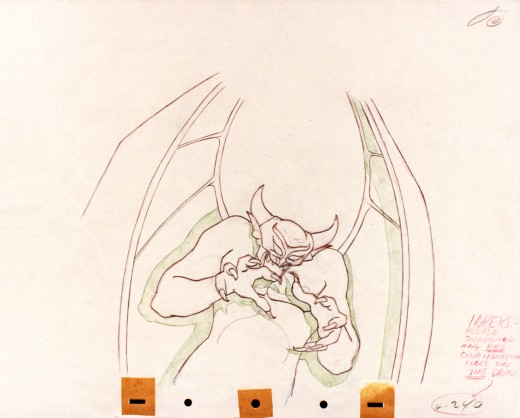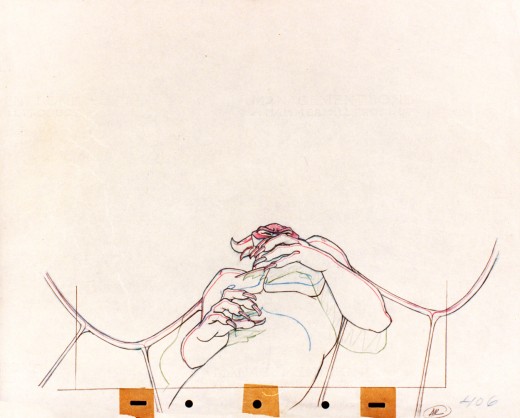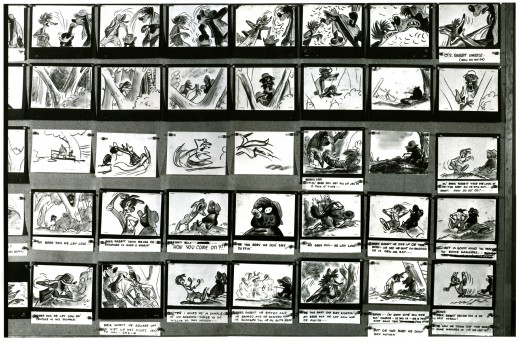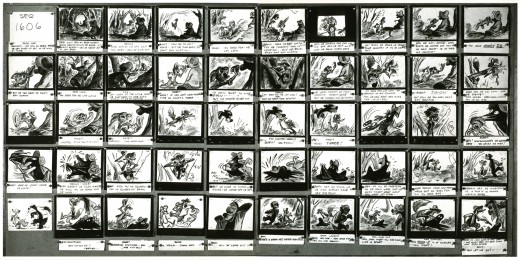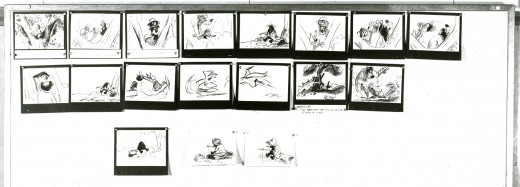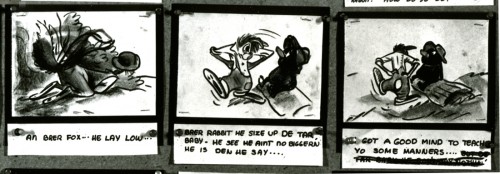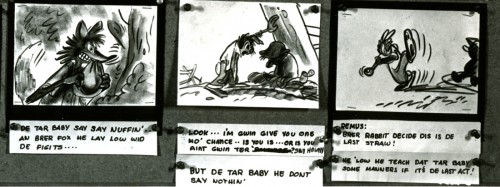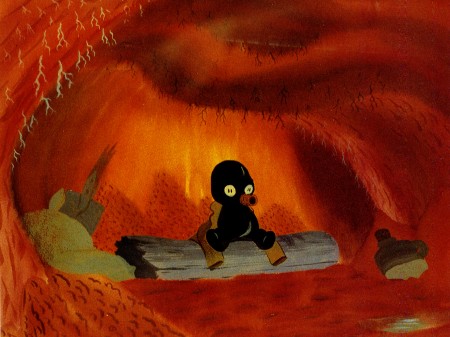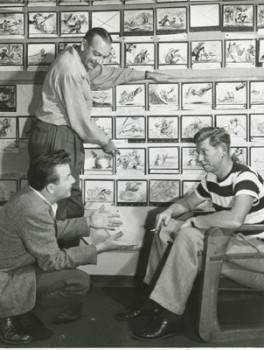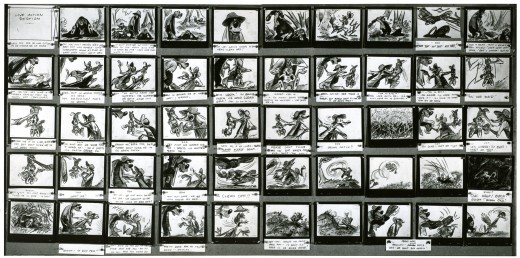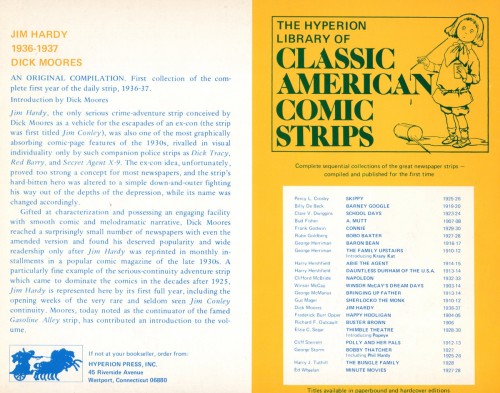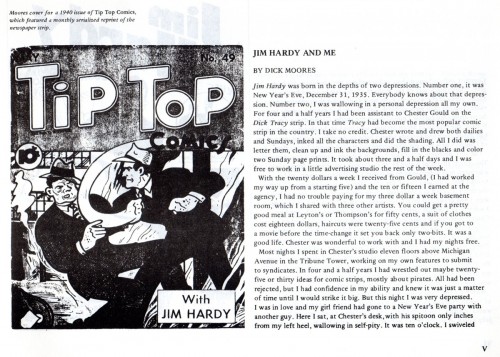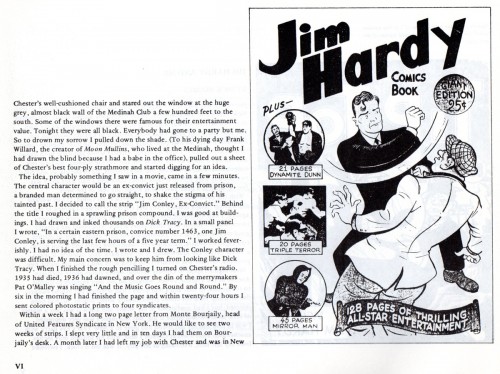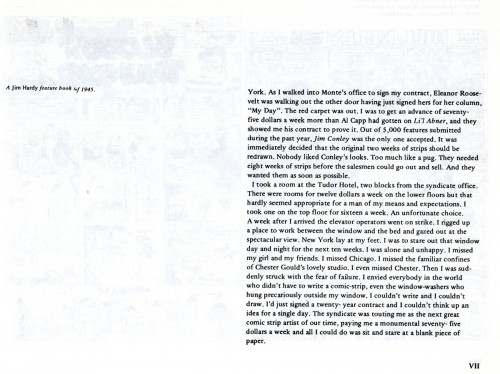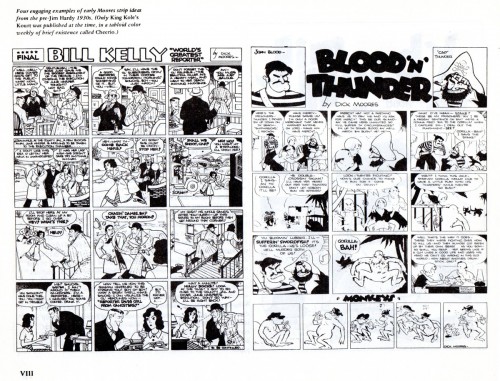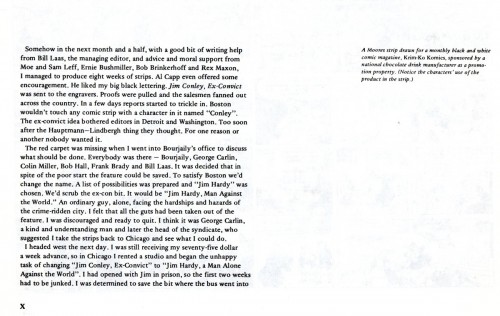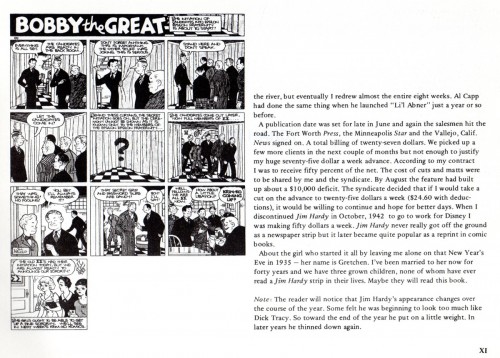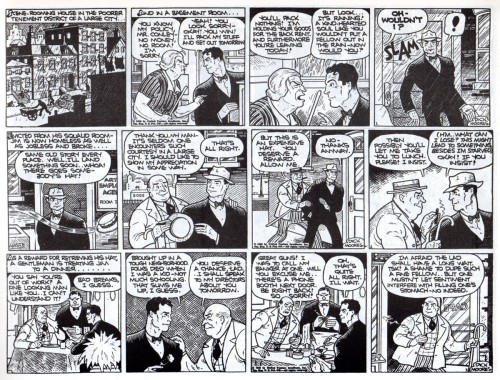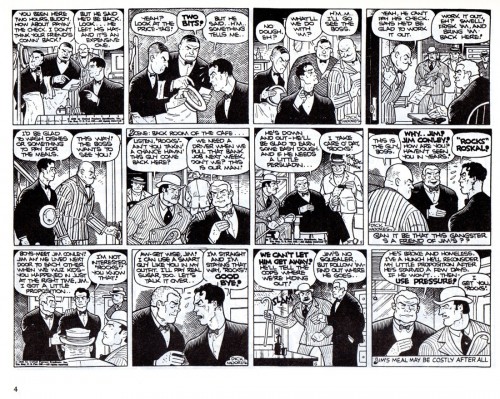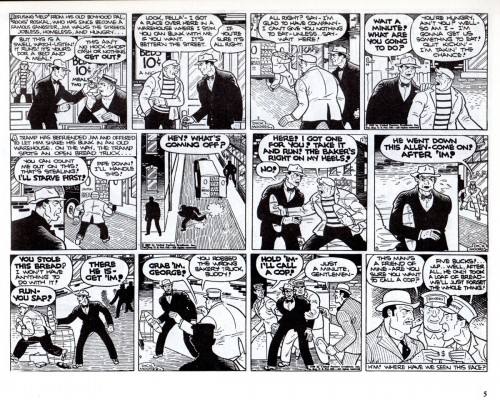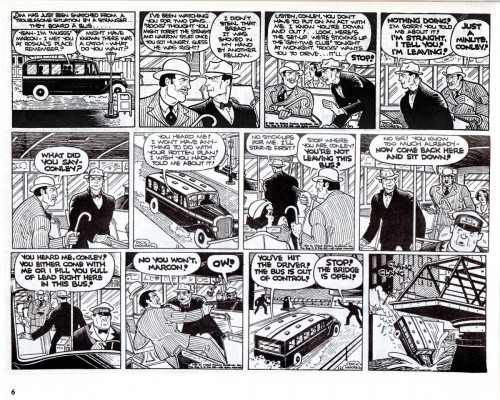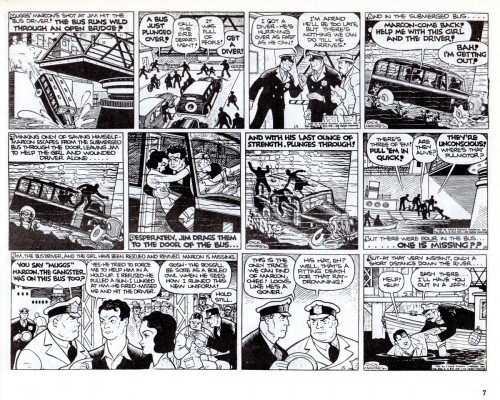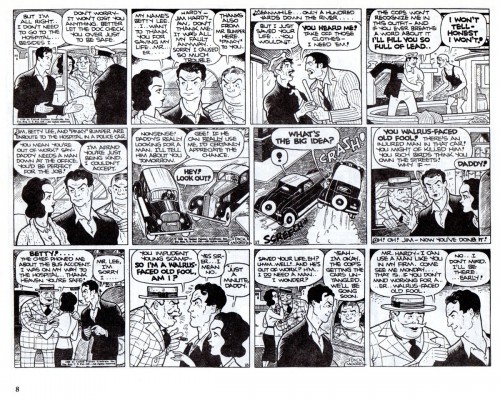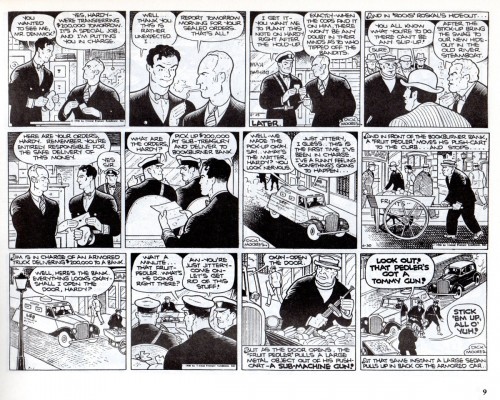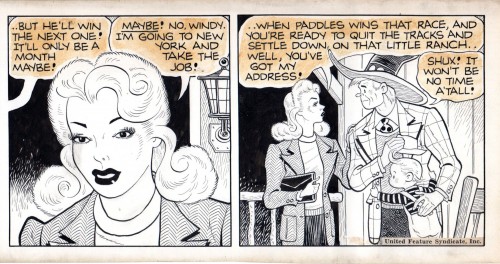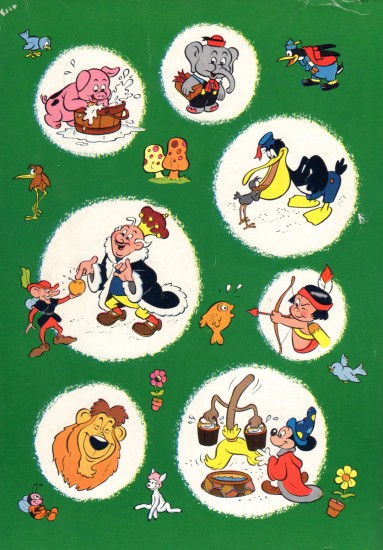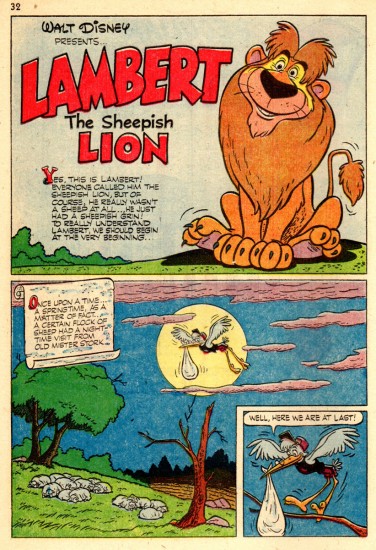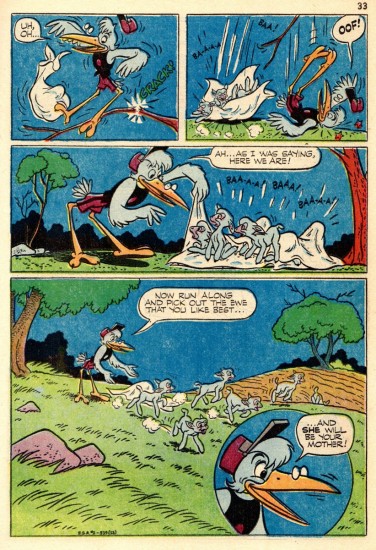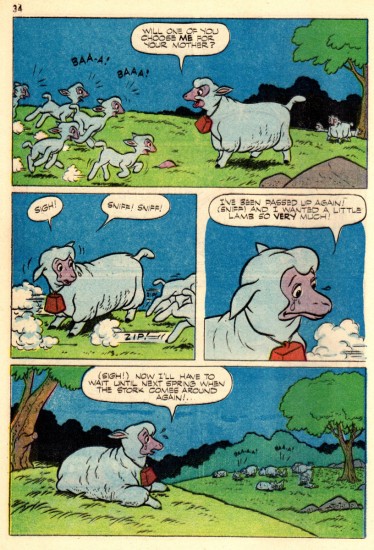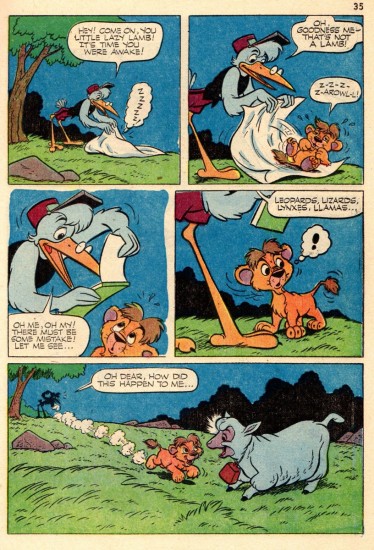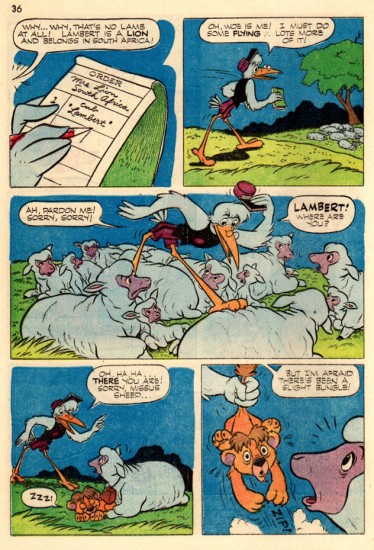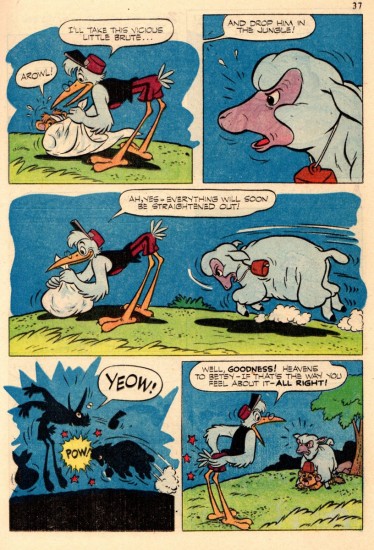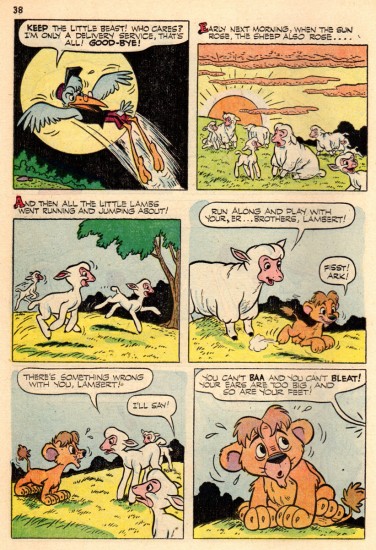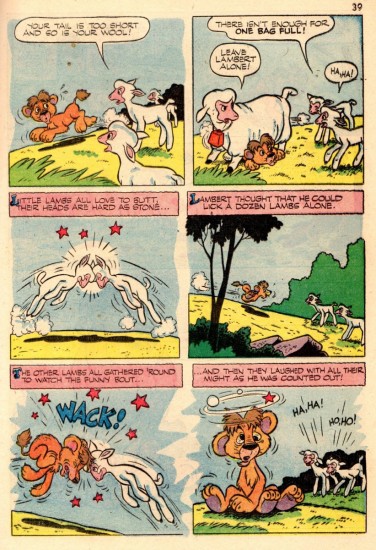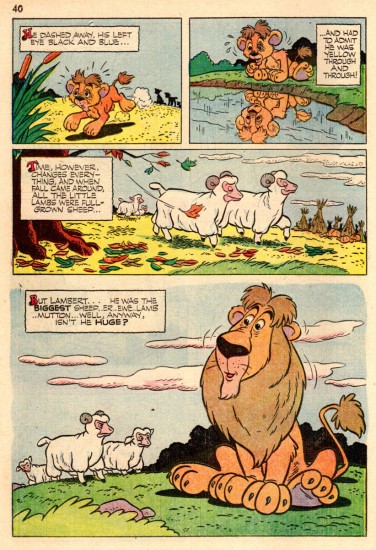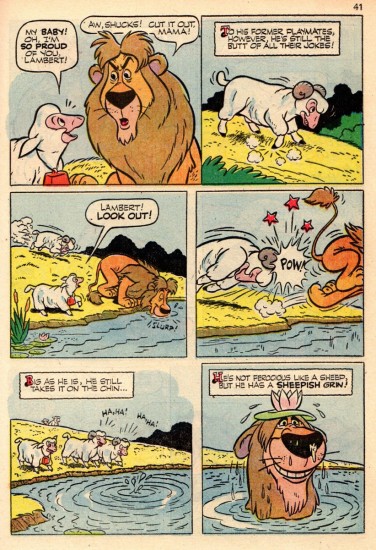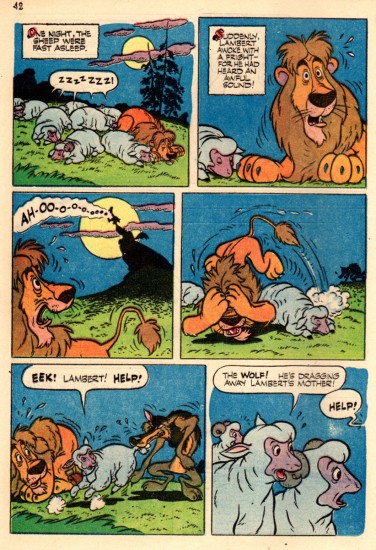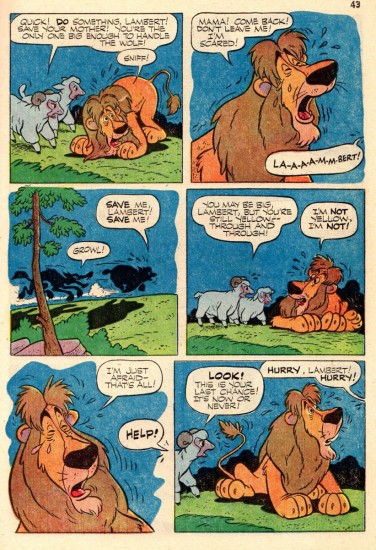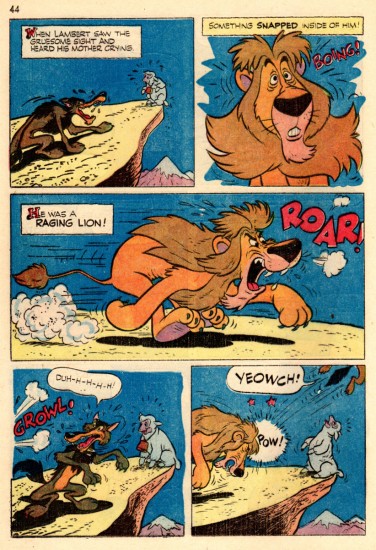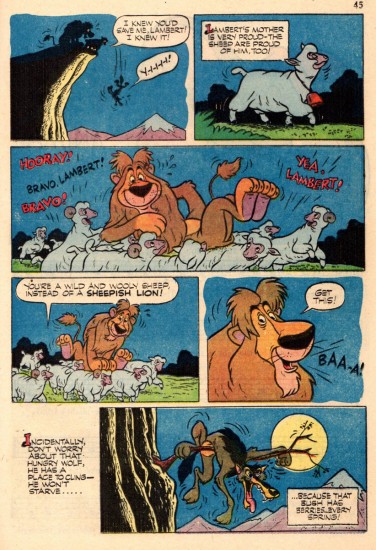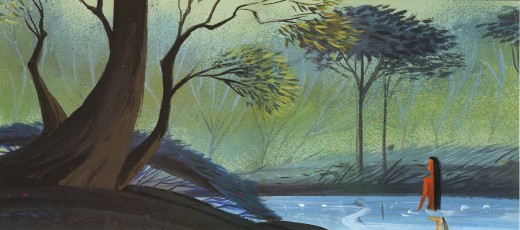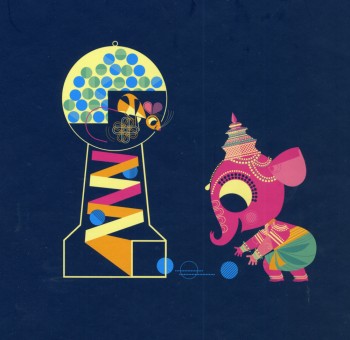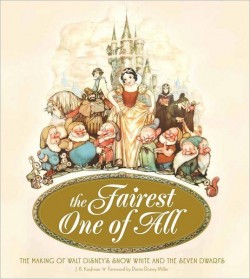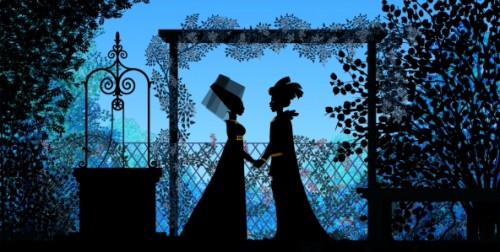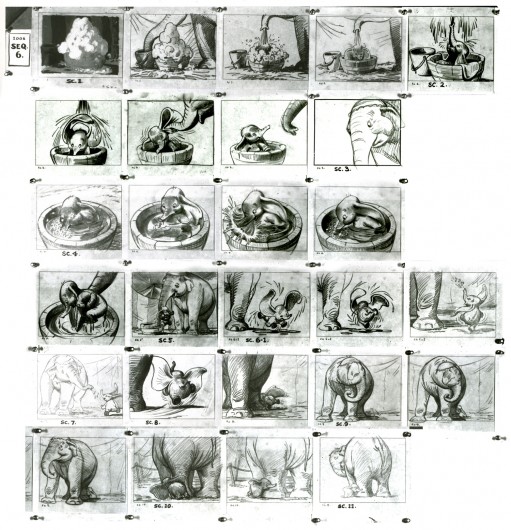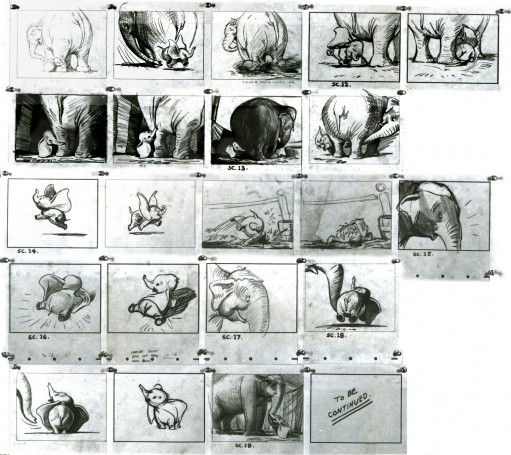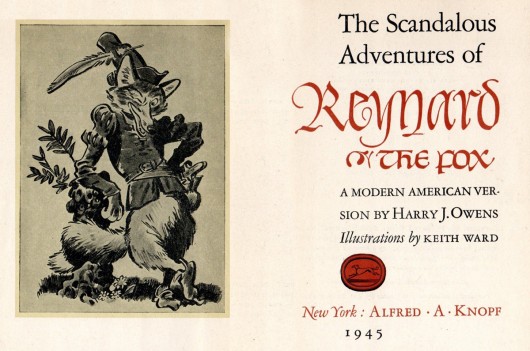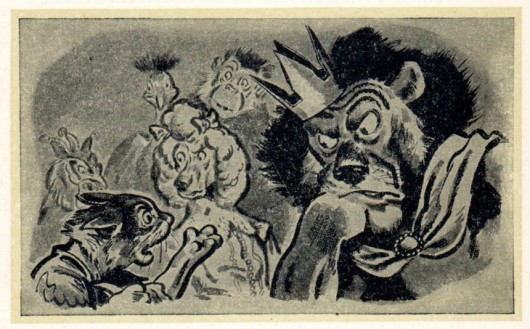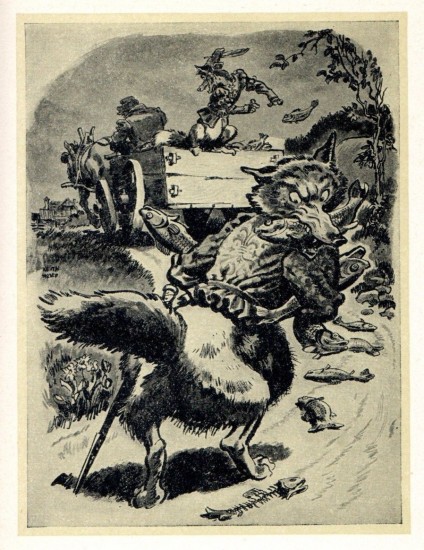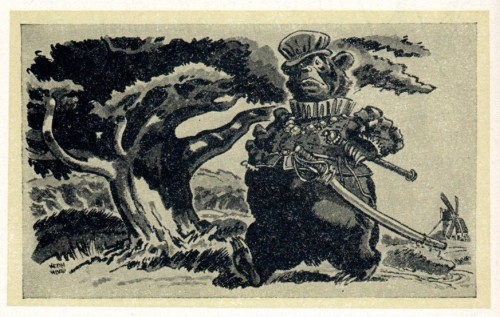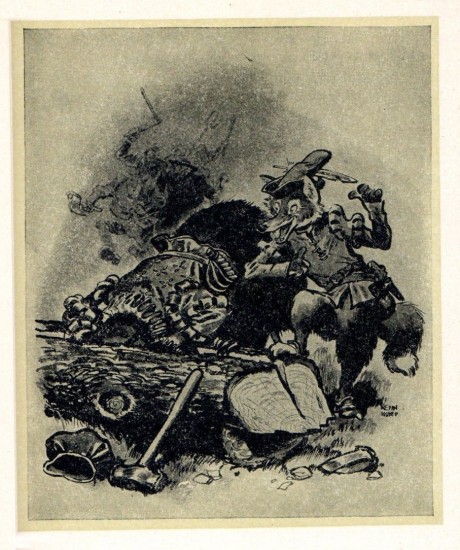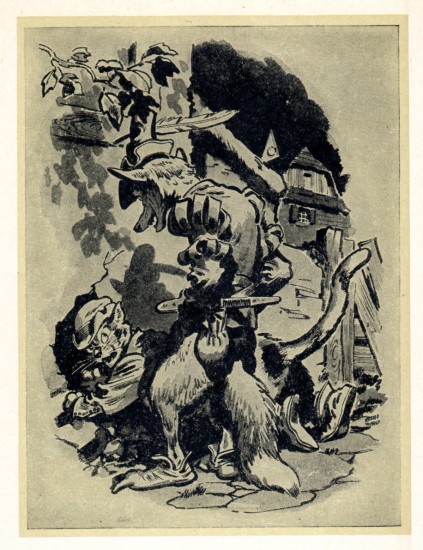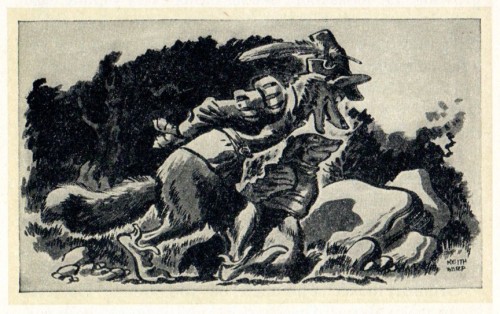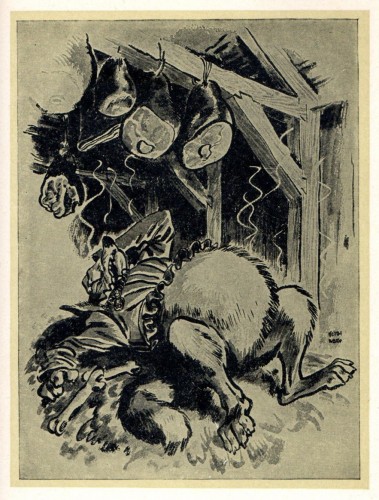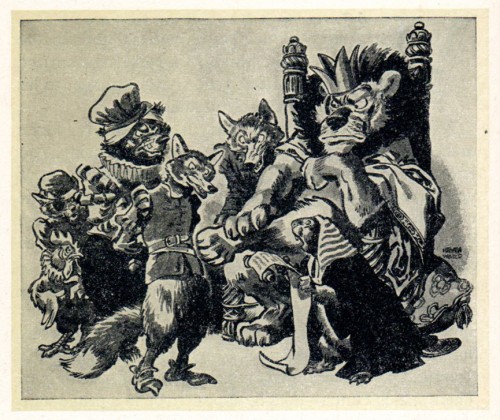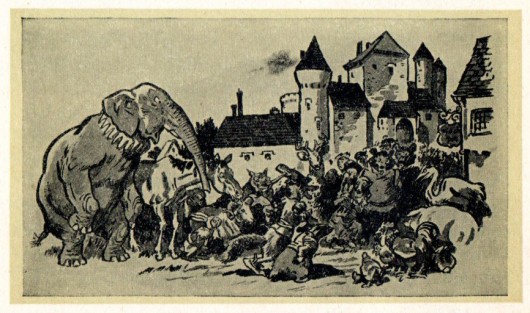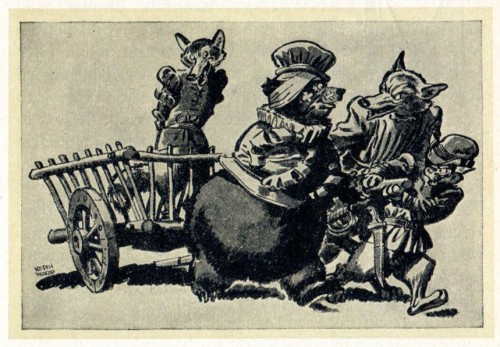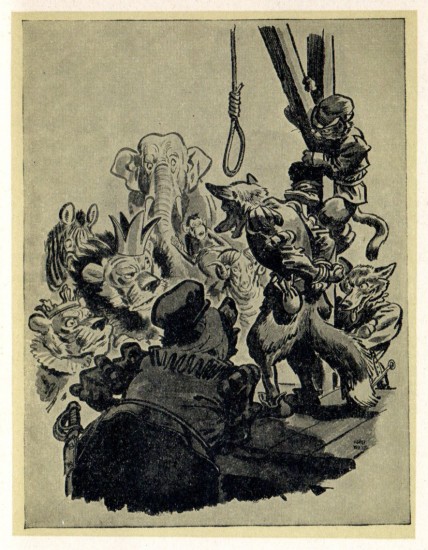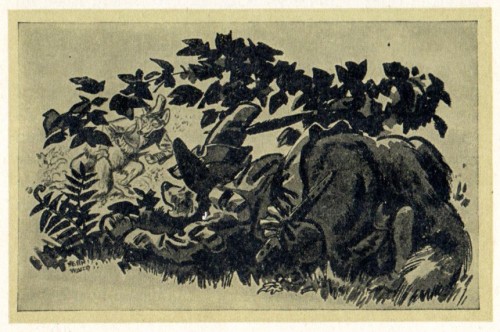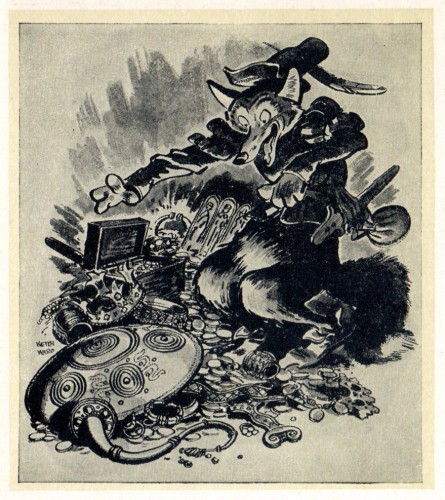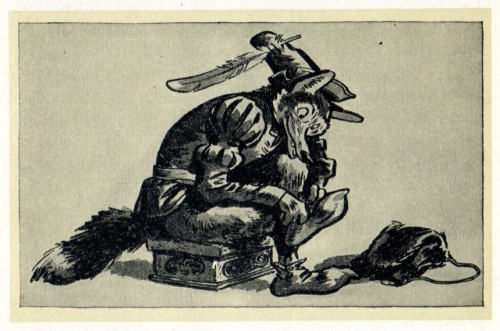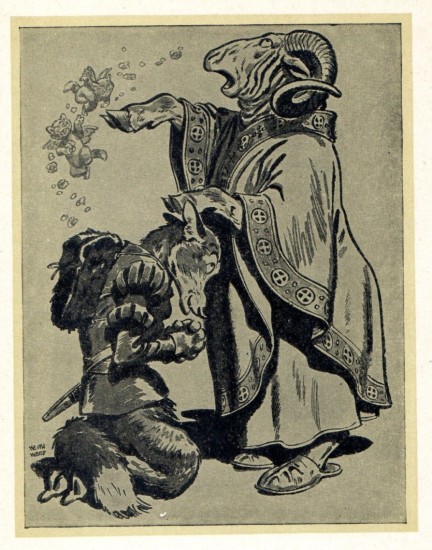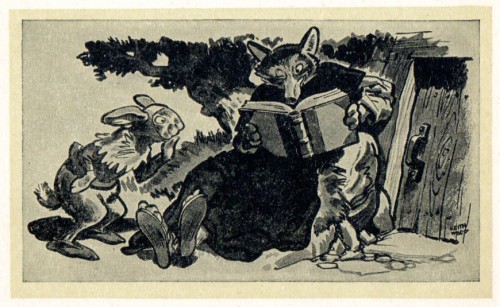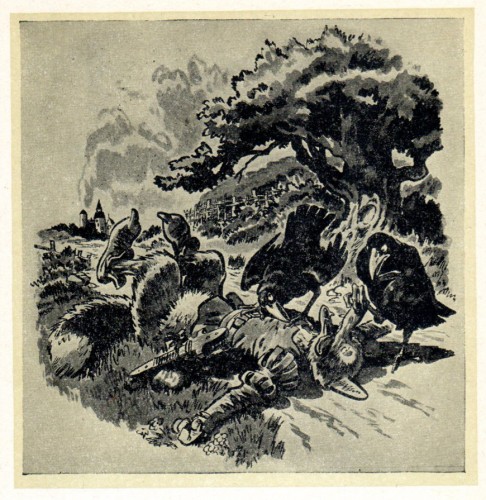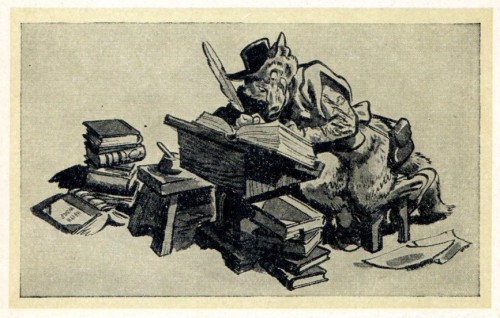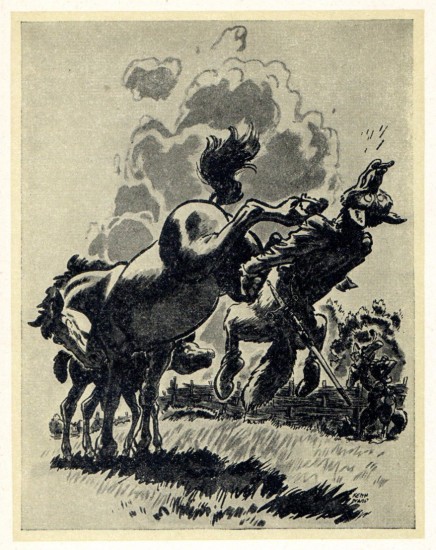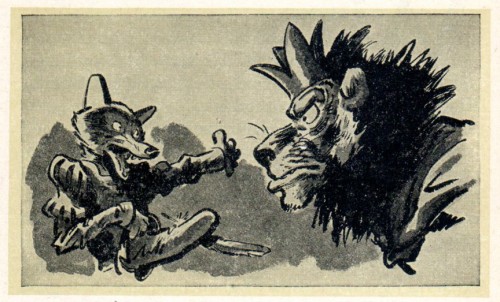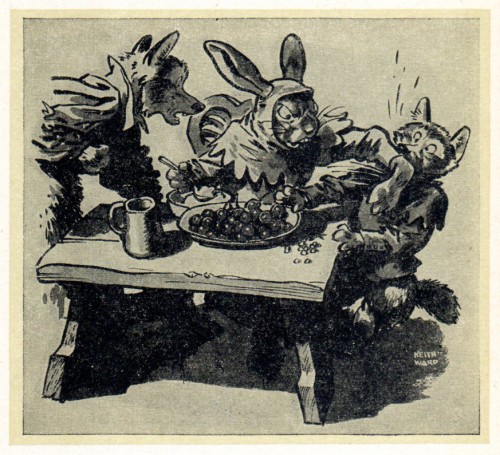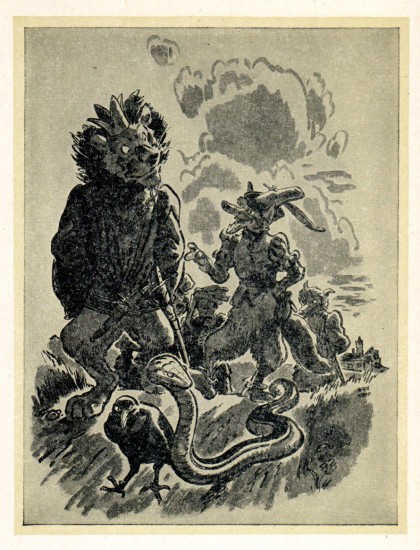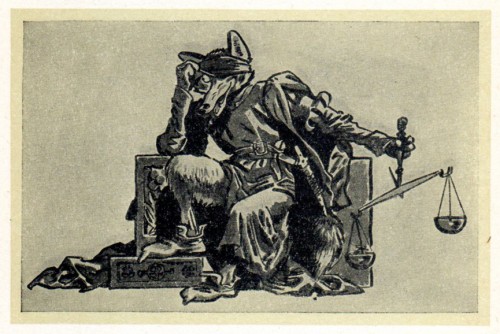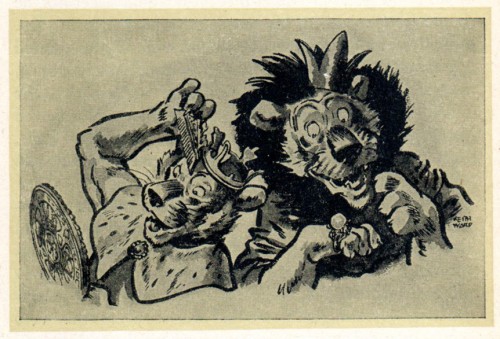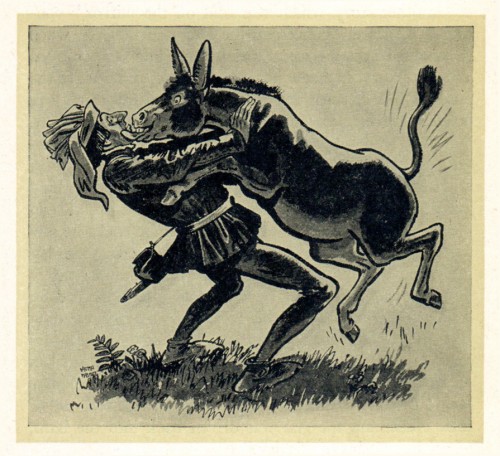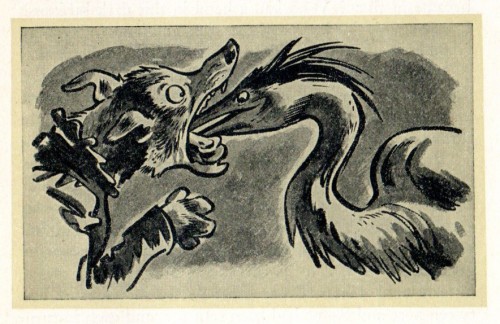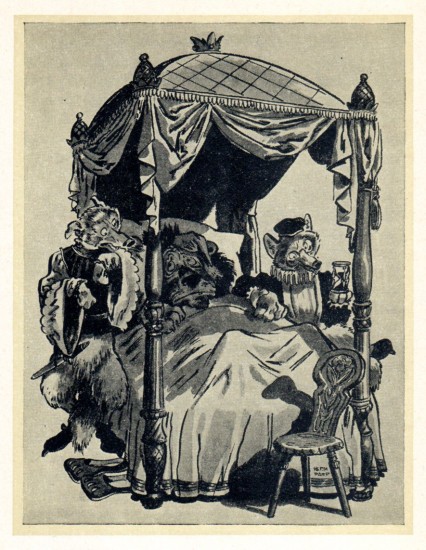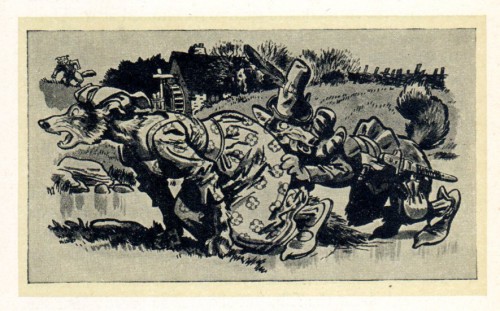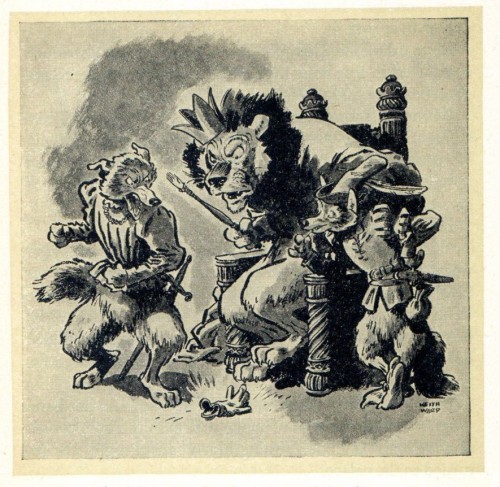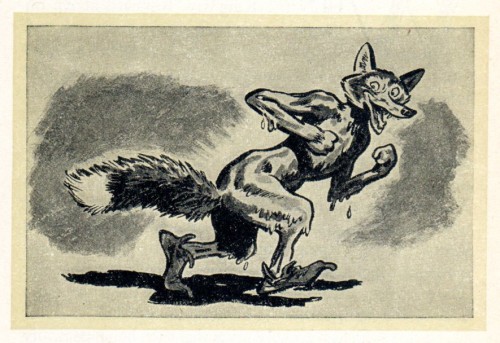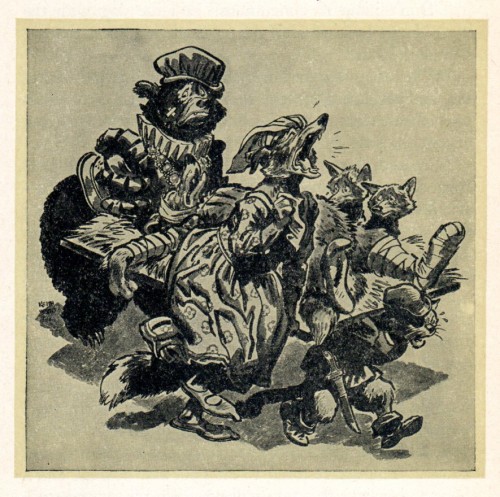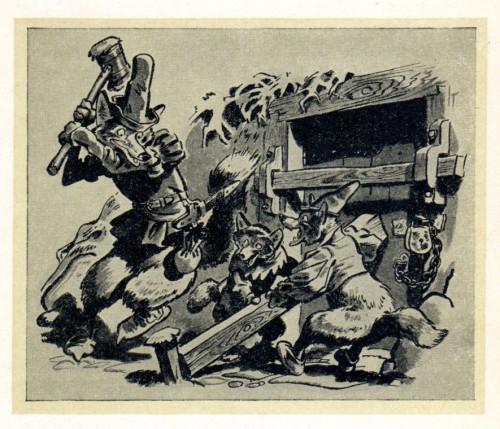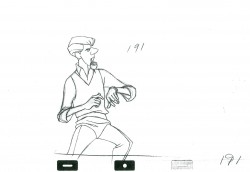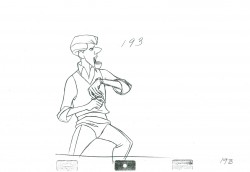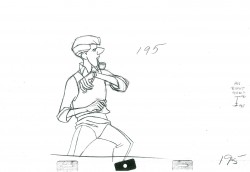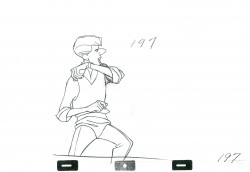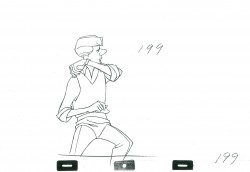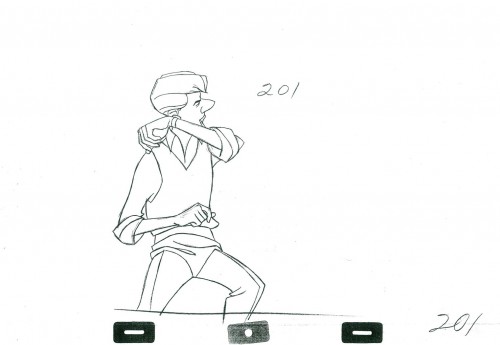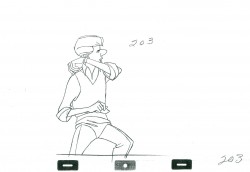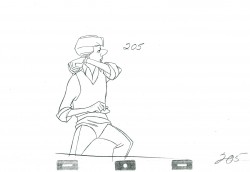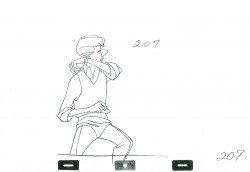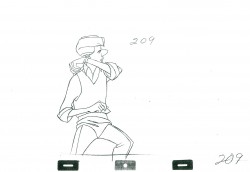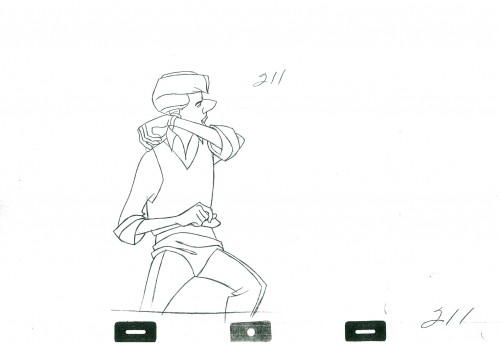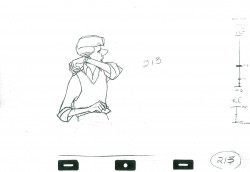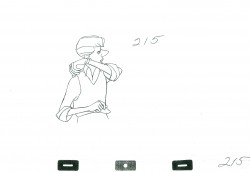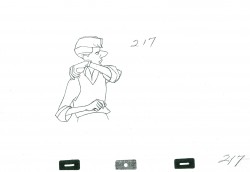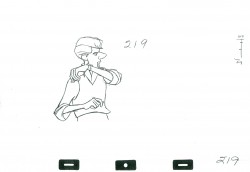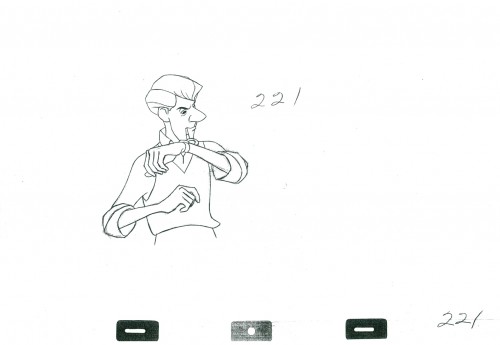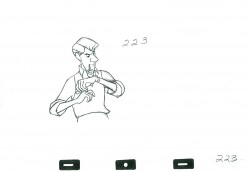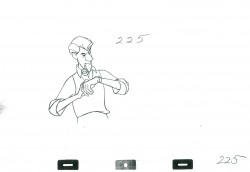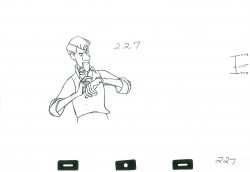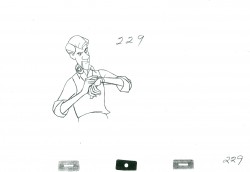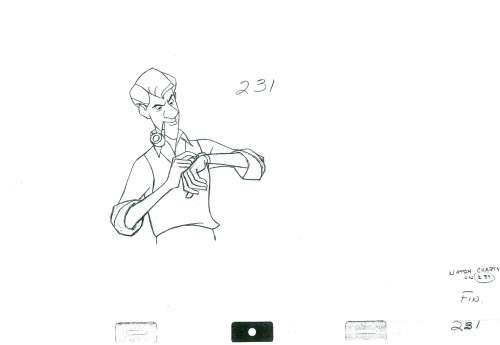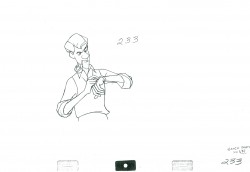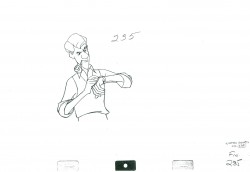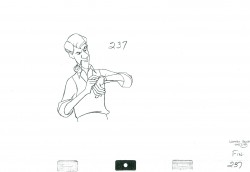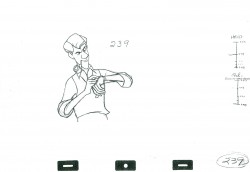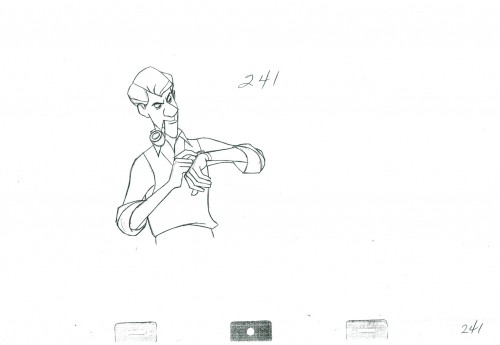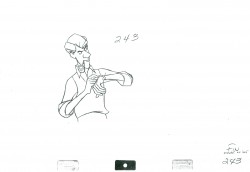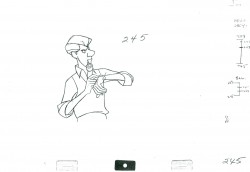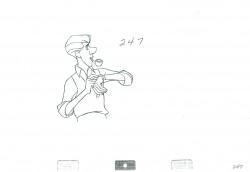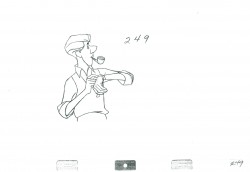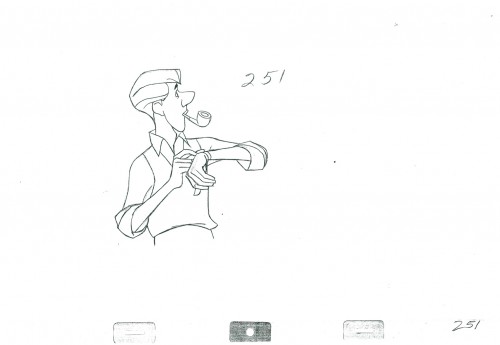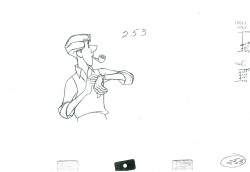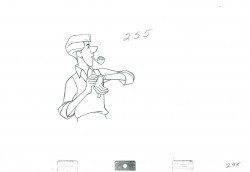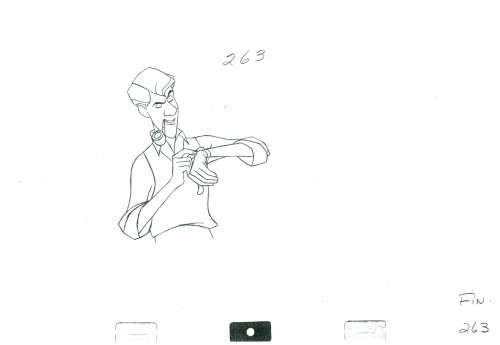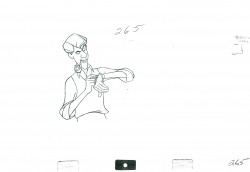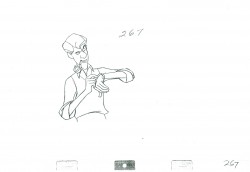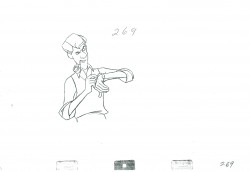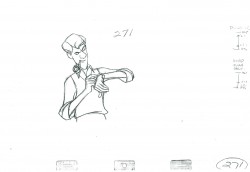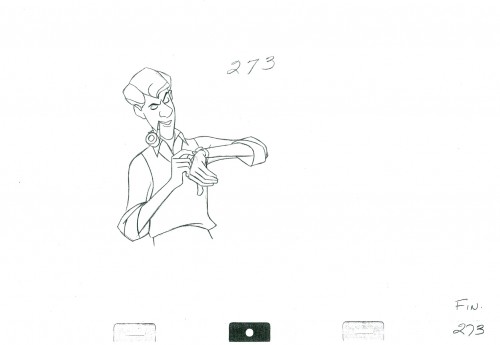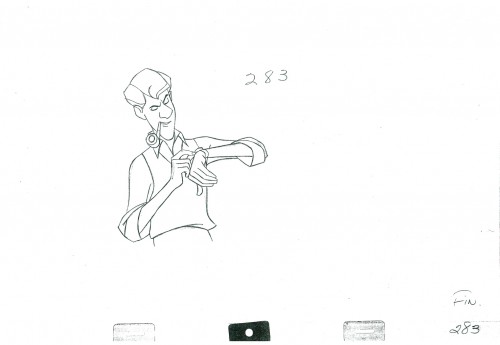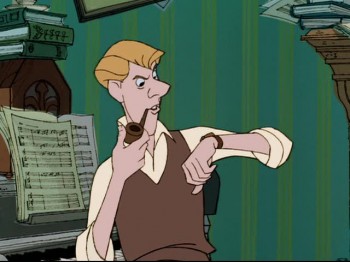Search ResultsFor "bill peet"
Animation Artifacts &Disney &repeated posts &Story & Storyboards 22 Apr 2013 05:04 am
Dumbo Storyboard Sketches – recap
I’ve spent a lot of recent posts writing about the animation of some of the earlier features. I thought I’d give a little focus on the storyboard of Dumbo. The variety and styles of the images is impressive. I’ve culled a lot of storyboard drawings from various sources and present in somewhat chronological order.
This was the first feature Bill Peet worked on. You can see his entire “Dumbo washing” sequence storyboard here.
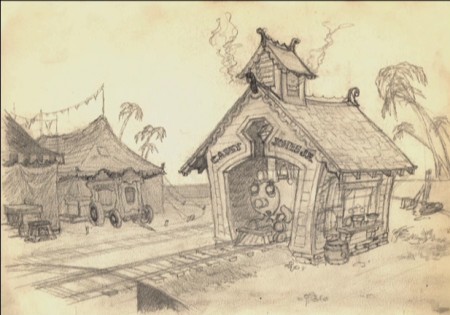 1
1
Action Analysis &Animation &Animation Artifacts &Commentary &Disney &Peet &Tytla 08 Apr 2013 05:05 am
Stanislavsky, Boleslavsky and Tytla’s Smears & Distortions – 4
Boleslavski was a great admirer of Stanislavsky and his acting techniques. When he, Boleslavsky, came to the United States, he taught the Stanislavsky technique to his students. These included Lee Strasberg, Stella Adler and Harold Clurman; all were among the founding members of the Group Theater (1931–1940). The Group Theater was the first American acting ensemble to utilize Stanislavski’s techniques, and its members all went off to espouse their own versions of the “method.” American acting had taken some real turns into the creation and development of a true system for getting the best performance out of the actor.
In animation, there was animation technique and styles. These rarely had anything to do with acting. However, there were a number of animators at the Disney studio who wanted to put the focus on their acting and actually studied Stanislavsky and Boleslavsky so that their characters would give a great performance. Tytla was certainly a leader among the animators to do this.

Whereas in Pinocchio, while working with such a flamboyant and
eccentric character, Tytla stretched and distorted Stromboli to
get the necessary and sudden emotional mood shifts desired.

With Dumbo, Tytla modeled the character after his own son,
and he animated this scene wholly on the two characters
given to him on the strong storyboard by Bill Peet.

He didn’t use distortion, because it wasn’t the character he was animating.
Dumbo was gentle, all truth. The honest performance meant keeping everything
above board and on the table. That is undoubtedly the performance Tytla drew.

In my opinion, it has to be one of the greatest animation performances
ever drawn for a film. It’s quite extraordinary and cannot be undercut
in any possible way.
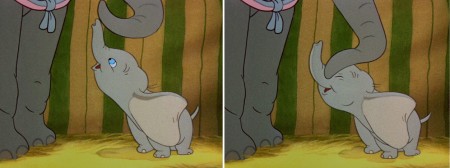
(Click any image to enlarge.)
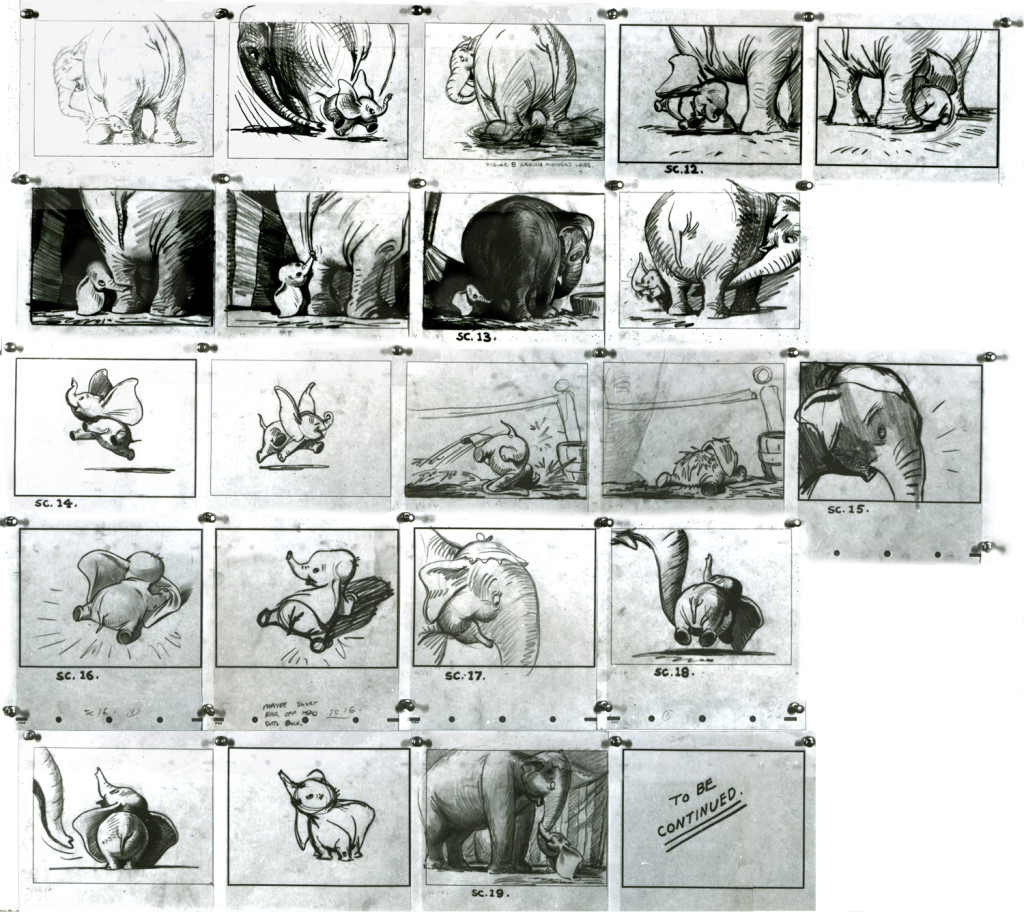
You can see that Bill Peet’s storyboard was certainly an inspiration,
at the least, for Tytla to follow, if not to equal.
Let’s move to another film. Fantasia.
Vladimir Tytla worked on the devil in Mussorgsky’s – Night On Bald Mountain.
Here are some drawings for the scene. They’re part Tytla and part clean up by his assistant.
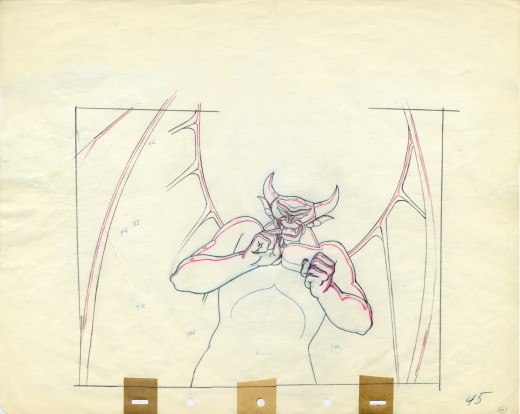
A good example of a Tytla drawing.
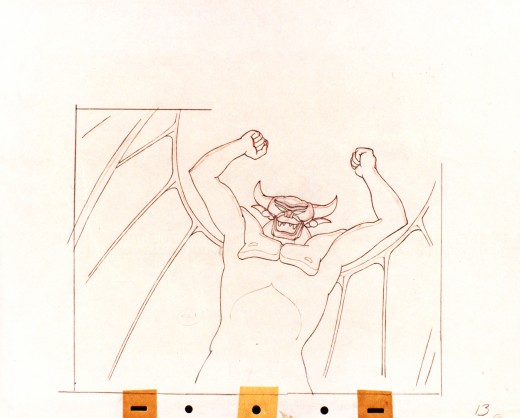
They’re pretty damned impressive drawings. If there is any distortion,
it comes from making a body builder’s shape stronger. There’s no violent
flexing of those muscles, just the natural thing on display in the middle
of a dance sequence. Strong and forcefully beautiful drawings. The
distortion is done by the other spooks floating out of their graves on
the way up to their leader.
The devil’s motion throughout this piece is very slow, tightly drawn images of the devil lyrically moving through the musical phases. It’s pure dance. Any distortion is done via the tight editing that Tytla has constructed. Very close images of the hands with the flame shaped dancers moving about in tight close up as Chernobog’s large face with searing eyes closely watching the fallen creatures dancing in his hands. It’s distortion enough.
Tytla has constructed the most romantic sequence imaginable, and the emotion of the dance acts as the climax for all of Fantasia, and it succeeds in spades. All hoisted by the animation, itself. No loud crushing peak, just a dance done in a tightly choreographed number completely controlled by Tytla. It’s the ultimate tour de force of animation, and we’ll never see the likes of it again.
So essentially I’m pointing out that Tytla used distortion in the animation drawings to execute his acting theories, but as he grows, he not only uses his animation (and animation drawings) to “Act”, he uses his abilities as an Animation Director. The cutting and the movement of the scenes is used for the Acting, as well.
Disney &Peet &Story & Storyboards 21 Feb 2013 06:46 am
Tar Baby – repost
- Back in Oct 2007, I posted Bill Peet‘s excellent storyboard for the Tar Baby sequence from Song of the South.
Given yesterday’s post of color sketches and storyboard drawings from this film, and given that the original posting of these boards was done relatively small, I thought it time to put them up again, but I’ve taken the time to break them down and post them in a slightly larger form, making them a bit more legible.
As with other recent boards loaned me by John Canemaker, I first display them in the original size of the stats as they came to me.
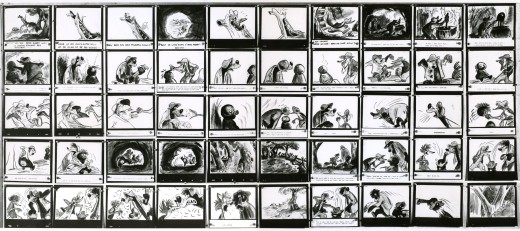 1
1
(Click to enlarge images so you can read them.)
Here is my breakdown of the boards:
 1a
1a
 42a
42a
I just love the drawings from this section.
There are another two pages of the storyboard
which I’ll break down and post tomorrow.
.- Here’s the conclusion to the storyboard by Bill Peet that I began yesterday. It’s the Tar Baby sequence from Song of the South.
I first posted this in October 2007, but I hadn’t broken up the board so that it could be enlarged enough. I’ve done that.
Many thanks go to John Canemaker for initially lending this material for me to post.
.
.
.
This picture comes from the Bill Peet website, worth a visit.
Here are the two remaining original boards:
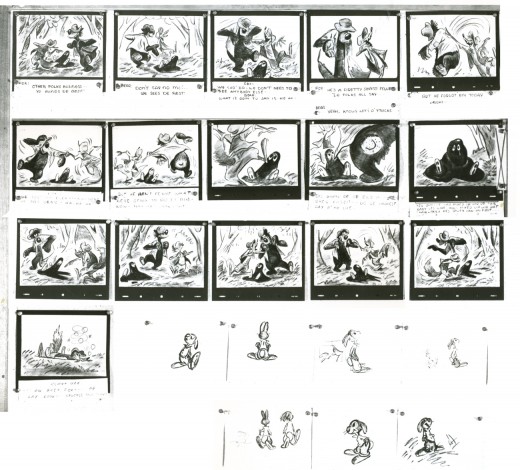 5
5(Click images to enlarge.)
And here are the same two boards broken down by rows:
 51
51
Books &Commentary &Disney 19 Feb 2013 05:17 am
Jim Korkis’ Song of the South
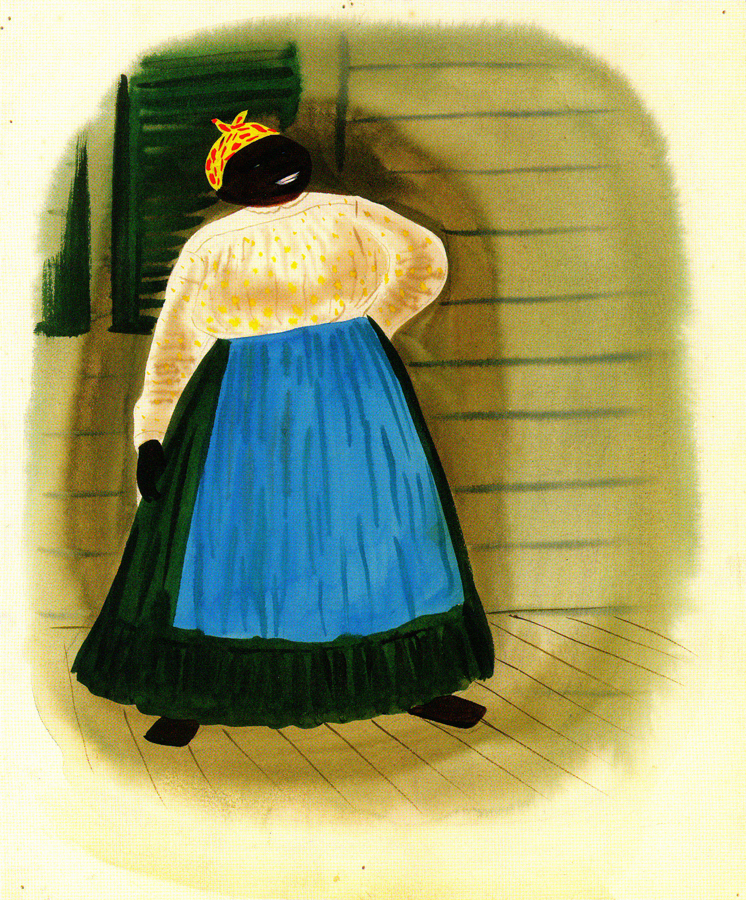 As the War came to an end, Walt Disney realized that he needed to find a way to raise money for his movies or, at the least, make films more profitably. One idea he chose to employwas to make more live action film.
As the War came to an end, Walt Disney realized that he needed to find a way to raise money for his movies or, at the least, make films more profitably. One idea he chose to employwas to make more live action film.
He’d had some modest success with The Three Caballeros and Saludos Amigos by combining live action and animation.
For years he’d thought of doing a combination film with Alice In Wonderland placing a live action Alice in an animated world, not unlike the early silent films Alice in Cartoonland.
Disney also thought of going to the stories of Joel Chandler Harris. By making the story of the humans in live action and the stories of Br’er Rabbit, Br’er Fox and Br’er Bear in animation, as told by Uncle Remus who would star in the significant part of the story told in live action. Thus he could easily work as the voice over narrator for the animation.
The film went into production in 1945 and pulled Disney down a harsh and difficult path.
Now, some 70 years later, studio head, Robert Iger, has vowed numerous times to keep Song of the South (the film’s title) on a shelf in the Disney vault, which is where it remains.
Disney historian, Jim Korkis, has written a series of excellent essays which act as chapter in a new book about the making and unmaking of this film. In his book, Who’s Afraid of Song of the South, a great weight of information completely informs us about this movie while being written in a positive and gentle approach.
Were the film as bad as Iger and other Disney executives want us to believe, here would still be a good reason for this book’s existence. Perhaps, though, it might have been a larger and more colorful tome.
The live action, representing about 60% of the film is not well conceived. It is terribly out of date and not well directed. Most importantly, the film is not well written. It’s somewhat confusing as to when the story takes place (pre- or post-Civil War?) What are the father’s resources, who owns the plantation where they’re living and where is the story trying to take us.
The acting by James Baskett as Uncle Remus is superb and wholly deserving of the Special Oscar he received. Child actor, Bobby Driscoll, is also fine, but many of the other performances are bland and not very noteworthy. The film is horribly dated. The Disney people sought the finest cinematographer they could get, and they did find him in Gregg Toland. He was the brilliant photographer of Citizen Kane and How Green Was My Valley. However, Song of the South was his first color film, and that was an enormous leap to make at the time. Toland had good reason to want to do the movie, but the film feels like Gone With the Wind – lite and helps to make it feel dated.
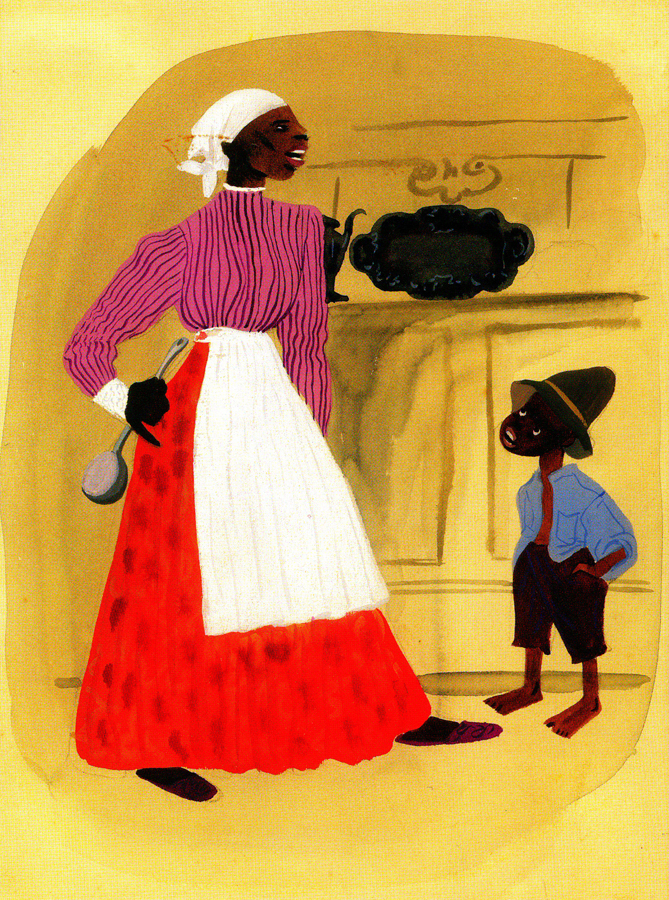 However bad the live action was, the animation was the polar opposite. The stories are told very economically with lots of excitement and life in the storytelling. All those who worked on it spoke openly about how much fun they had in doing it. Those results showed up on the screen. The characters are delightful and beautifully developed. This was certainly the spark everyone in the animation department needed as they came off years of toiling away at dry, training films for the military.
However bad the live action was, the animation was the polar opposite. The stories are told very economically with lots of excitement and life in the storytelling. All those who worked on it spoke openly about how much fun they had in doing it. Those results showed up on the screen. The characters are delightful and beautifully developed. This was certainly the spark everyone in the animation department needed as they came off years of toiling away at dry, training films for the military.
While the live action dates the material and plops it in a marginally racist context, the opposite is true of the combustible animation.
The Disney studio has hidden the DVD of this movie from the General Public. There are illegal copies of film circulating the Internet, but the quality could never be as good as a studio sanctioned copy of the movie. It’s truly unfortunate, for the sake of that great animation, that the film is inaccessible.
Korkis’ book is a very quick read and he seems to cover the story well. One would have liked a richer book with glossy images, especially of the beautifully designed Mary Blair animation.One wishes that there were lots of stills of the great Bill Peet storyboard or those great animation drawings by the Nine Masters who were truly in their prime. But we have what we have, and we’re thankful for that.
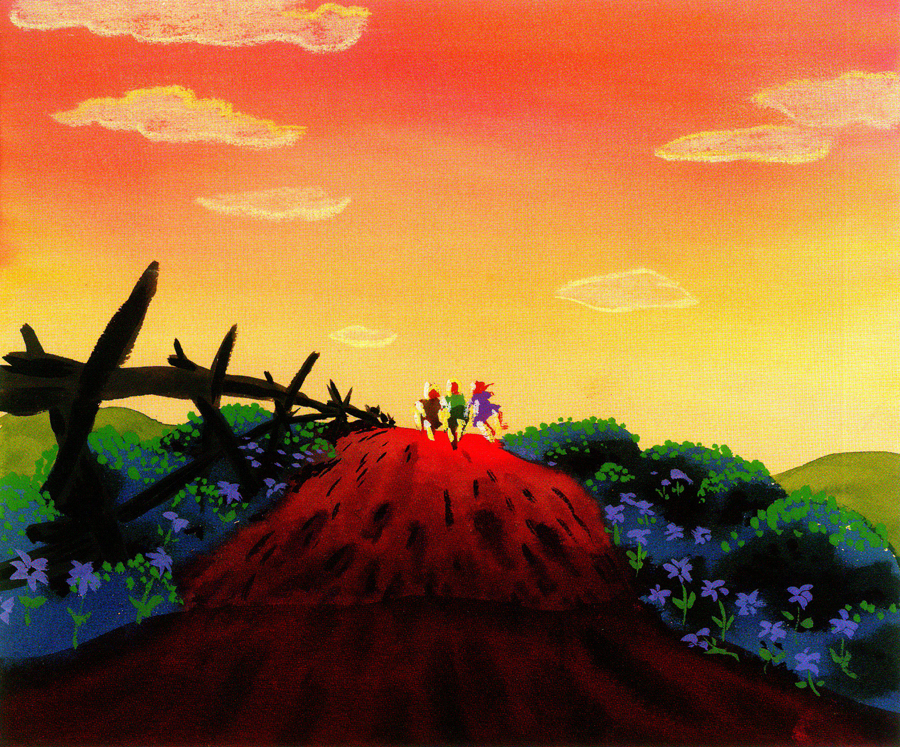
If you have any interest in this film you will have to get your hands on a copy. The last half of the book if filled with some essays about other, lesser films. Some of th essays are truly excellent and feel hidden in the back of this book. One, for example, about a commercial producing studio Walt had on the lot. Learning that Walt’s daughter, Sharon, worked as an assistant to his sister-in-law’s sister, who ran the company, would seem to be a key piece of information. But when you start to learn who Walt used to do the animation work (Tom Oreb designing for Charles Nichols directing with Phil Duncan, Amby Paliwoda, Volus Jones and Bill Justice all were among those animating. There’s even the story of Bill Peet being punished by Walt and made to work on a Peter Pan peanut butter campaign.) This is an excellent piece. As is the story behind The Sweatbox, the feature documentary that was hidden by the Disney studio about the adventures in the making of the Emperor’s New Groove. Lots to read here.
All in all, this book is an excellent bargain.
All of these illustrations were done by Mary Blair for the film.
They’re not part of Jim Korkis’ book.On Thursday I’ll repost Bill Peet’s storyboard for The Tar baby.
Commentary 05 Dec 2012 07:00 am
December 5th
- Yes, today is Walt Disney‘s birthday anniversary. He would have been 111 years old. It’s also the anniversary of this Splog. It’s seven years old today; my 2,552nd post. They’ve gotten a lot longer than the initial posts. They’ve also gotten more verbal rather than visual, though my attempt is always to keep it visual. I like putting up pictures, especially if the pictures are ones you see so infrequently.
Yesterday, was a first. I had prepared a review of the new McKimson book, I Say, I Say . . . Son!; I’d spent a hell of a lot of time putting it together. And I was supposed to post it yesterday morning. But I forgot. I never put it up. It’ll be posted tomorrow, but I can’t get over the fact that I’d forgotten to send it out there. Mark Mayerson caught it. This was the first time that I did that, and he checked in to make sure I was OK. Maybe I am, maybe not. Could be Alzheimer’s, could be I just forgot it. I have had some time with that review, and a lot of stuff has gotten in the way with it. I’ll be curious to hear any of your comments on it.
Over those past seven years, there are some posts that I’ve been particularly proud of having run and others that were just filler. It’s interesting how I get pleasure from some posts that you might not expect.
I certainly like posting things that one rarely sees on the internet and enjoy putting out material that every animator should own.
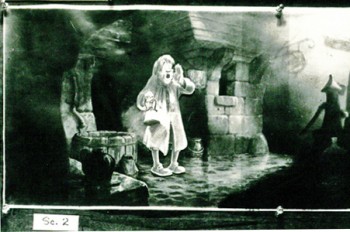 For example, I like putting up storyboard images such as these from Pinocchio: this was composed of photos from animation pencil tests from Pinocchio. Bill Peckmann and John Canemaker contributed.
For example, I like putting up storyboard images such as these from Pinocchio: this was composed of photos from animation pencil tests from Pinocchio. Bill Peckmann and John Canemaker contributed.
Some of the actual board was here. The coachman’s ride.
I also enjoyed posting the board from Mr. Toad’s Ride, excerpted from The Wind in the Willows.
Or there was Dumbo takes a bath here.
There was also all the material from The Sword in the Stone as I posted not only the board from mad Madame Mim’s section of that feature, but I included some great artwork by Bill Peet from that film.
I also liked the walk cycles from 101 Dalmatians, here.
I’ve written often enough about his work for you to know that I’m quite a fan of Yurij Norshtein.
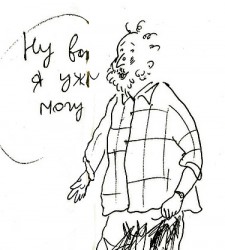 There were the chapters from that wonderful little book about Yurij Norshtein:
There were the chapters from that wonderful little book about Yurij Norshtein:
Norshtein Comics – 1
Norshtein Comics – 2
Norshtein Comics – 3
Norshtein Comics – 4
Norshtein Comics – 5
Norshtein Comics – 6
As a matter of fact, there were a whole string of posts I did about Norshtein when I was reading Claire Kitson‘s brilliant book Yurij Norstein and Tale of Tales: An Animator’s Journey.
for example there was this post on Norshtein’s Battle of Kerzhenets.
Or there was this post about a breakfast I had arranged in my studio for Norshtein and Feodor Khitruk. It was a wonderful morning for me, and I enjoyed sharing it on my blog. (It was sad to note that Feodor Khitruk died this week, December 3rd. I’ll try to put together a proper post to note his life’s work.)
I have been enormously influenced by Norshein, the Hubleys and other animators, such as Tissa David or Jiri Trnka or Bill Tytla. It gives me pleasure to talk about such influences. You can just go to the blue names to the right of the blog to click on those names that are well represented.
Some of these stories really stand out for me. For example, there was this story about Finian’s Rainbow, a Print Magazine article by John Canemaker. I can’t tell you haw many times I’ve gone back there, myself, to look at the material again.
I also enjoy continuing a dialogue I see on the internet. If it gives me a chance to expound on animation, film or acting it often brings me pleasure. There was this post and others about it, thanks to a series by Mark Mayerson, that gave me time to think aloud on this blog.
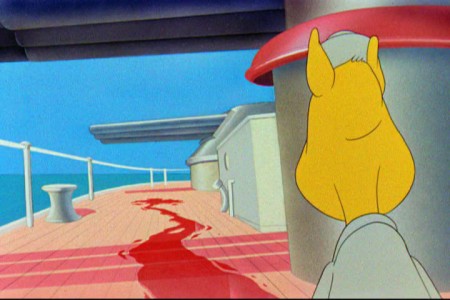 I have a strong love of design in animation, and I can’t help but call attention to it. George Cannata is a brilliant artist and deserves all the attention he can get. See here and here.
I have a strong love of design in animation, and I can’t help but call attention to it. George Cannata is a brilliant artist and deserves all the attention he can get. See here and here.
Or T. Hee was brilliant. See here or here.
I also have a wealth of artwork and plenty of information on Rowland B. Wilson. Start here or here or here.
You know, there’s just a lot of material here.
I haven’t even gotten into the wealth of material on loan from Bill Peckmann with his stunning collection of illustration and comic art. It’s just magnificent, and I am so proud to be able to post whatever he sends me whether it’s Rowland Wilson or Harvey Kurtzman, Gahan WIlson or Dick Moores. There’s just a bounty of artwork, and it all demands viewing. What a treasure is there. What a pleasure to post it.
All I can say is that I intend to keep it up. There’s so much more to post, so much more to enjoy,
Bill Peckmann &Books &Comic Art &Disney &Illustration &Peet 20 Nov 2012 07:07 am
Moores’ “Jim Hardy” & “Lambert”
- Recently, on this Splog, we saw Dick Moores, who would eventually replace Frank King as the artist behind Gasoline Alley, as the artist behind the beautiful comic books featuring Mickey Mouse. Bill Peckmann continues with the Disney artist, Moores, as he gives us Lambert the Sheepish Lion, Bill Peet’s tale.
But first we saw an early strip drawn by Moores, “Jim Hardy”. Bill Peckmann is here to present some of the Moores history:
- When Dick Moores was assisting Chester Gould on his ‘Dick Tracy’ strip in the 1930′s, his big dream was to eventually have a daily strip of his own. In 1936, he was finally able to fulfill that wish with the comic strip ‘Jim Hardy’. It lasted from 1936 to 1942. He left ‘Jim’ to join the ranks of the Disney comic strip dept. in ’42.
- In this 1977 Hyperion Press’ book of reprints we get to read Dick’s version of how the strip came about (and what a sweet read it is) and also included are the first 21 dailies of the strip.
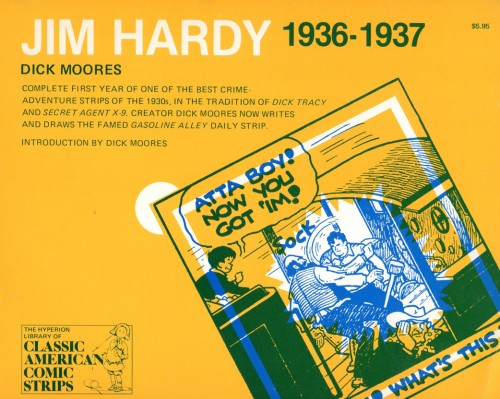
The cover page of this Hyperion Press collection of strips.
 15
15
Thanks to Germund Von Wowern we have an original ‘Jim Hardy’ strip from the early 1940′s. Beautiful ink work! (Sorry about the rubber cement stains in the word balloons, those are left over from re lettered foreign language versions of the strip.)
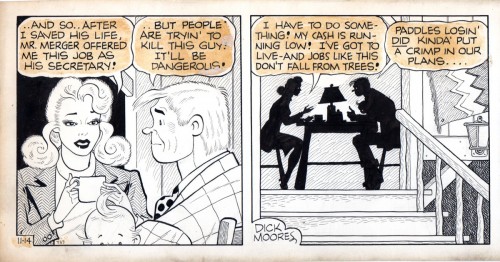 16A
16A
Here, I’ve broken the original strip into two parts
so that we can see it fully enlarged.
In this 1953 story Dick Moores had a great time adapting the Disney short ‘Lambert, the Sheepish Lion’ to the pages of a comic book. The more I look at the art, the more I start to get the feeling, that in Dick, the cartoonist, there was always an illustrator trying to get out. Some of these panels would have made pretty good page illustrations. (Which makes one wonder and dream of what a comic book page would have looked like if it had been done by the one and only Bill Peet!?!)
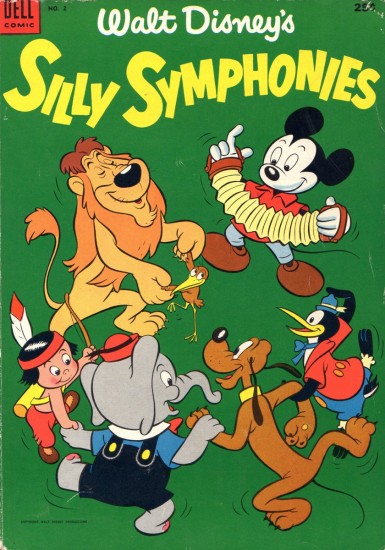
The comic book cover which contained Lambert.
In Part 2 we’ll continue celebrating the art of Dick Moores and the release of Library of American Comics’ “Dick Moores’ Gasoline Alley”!
Books &Daily post 29 Sep 2012 06:55 am
Egos, Books, and Michel Ocelot
There’s been a relatively short conversation going on at the comment section of my blog for an older piece I’d repeated this past week. The discussion has been about Eyvind Earle. The first few visitors who commented all wanted to express their dislike of this film (particularly the story) and Eyvind Earle’s design work, in particular. “Scott’s” dislike of Mr. Earle’s work extends to his personal attitude while working on the film. He, according to “Scott”, was thick headed and wouldn’t listen to any requested changes to his designs, allowing his ego to take charge of the work. (I’m not sure that I see that on the screen, nor did I really feel that when I met the man when I got to spend an afternoon with him as I accompanied Mike Barrier on an interview. I admit it is possible though.)
In fact, I think the ego is essential in breaking new waves and advancing the art form. Adam Abraham in his book When Magoo Flew writes about the ego of John Hubley in running his productions at UPA. If he wanted a specific blue, that’s all that he would settle for. The report is that he was oppressively insistent on it being his way only. I worked for Hubley for years and never got to see that side of the man. Oh, there was a well deserved and big ego there, but it never got in the way of the art being created.
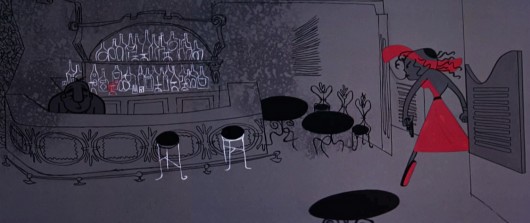
Rooty Toot Toot
We’ve seen Bill Peet complain about Bill Tytla‘s use of his (Peet’s) drawings while working on Dumbo. According to what I’ve read, Peet complains that Tytla took full credit for the sequence of baby Dumbo running in and around his mother’s legs, when Peet felt it was his scene, his key drawings that made the scene the perfect piece that it was.
Chuck Jones, while working briefly for Disney (on Sleeping Beauty), told Walt that he had to leave the studio. When Disney asked what job Jones really wanted at the studio, Jones said, “Yours.” He felt that only Disney’s job was suitable for him. Talk about ego. The ego was even larger than that when you realize that it was Jones, hmself, that told me that story – however real it actuall was. The egos of Jones and Clampett and even Freleng vie over who created what character.
Egos are necessary in an industry of craftspeople and artisans, especially when an artist is trying to get something brilliant out of them. Thomas, Johnston, and even Kahl were brilliant actors with amazing abilities of draftsmanship. But the film, the bigger picture, needed a direction which Earle gave it. Just look at the wretched Reitherman films to see what Thomas, Johnston and Kahl turned out without the strong, smart director who was also an artist. Tytla took animation to another level, he was truly an artist, himself, but look at the miserable little films he directed when he left Disney’s studio. Even the support system of that studio wouldn’t have helped Leprechauns Gold or Snap Happy. (Mind you, I love Snap Happy, but it has no relation to art.)
Here’s a small piece David Parfitt wrote:
- Tytla was a tough guy who used abusive language and irritated his fellow animators. Ken Anderson (Disney Legend for Animation and Imagineering) went to Walt Disney to express frustration at the way Tytla treated his coworkers. Walt Disney replied, “What do you think of Chernabog, the God of evil, in ‘Fantasia’? What do you think of Stromboli in ‘Pinocchio’?†Anderson (the art director for both films) replied, “They are some of the most powerful and vicious villains we’ve ever done.†Walt Disney looked at Anderson and said, “Where do you think all that anger comes from?†Vladimir Tytla was a maverick who needed to release anger and energy to manifest some of the most powerful imagery ever produced by the Disney Studios. A maverick is difficult for a company to grapple with because of their abrasiveness and the way they go against the way things typically run. Yet out of the agitation and irritation often comes a new direction that could secure a company’s future.
Sleeping Beauty changed the Disney studio forever. The animators and artists there, with the exception of Ward Kimball and a few others, fought against the use of 20th century graphics in their films, yet UPA’s influence slowly crept into the mix. Finally when Walt Disney, himself, chose Eyvind Earle and put full support behind him to design this film as he saw fit. The animators all fought Earle and continued to bad mouth him to the end of their days. Yet Earle’s style, as well as Tom Oreb‘s great character designs for that film, are frequently copied by the new generations of artists. The backgrounds and some of the character design are stolen directly from Sleeping Beauty. Even though the SB art is a play on 15th Century manuscripts and art, it was used for the Pocahontas forests.
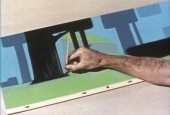
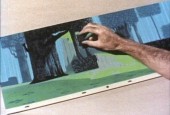
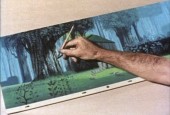
Painting Sleeping Beauty
Nothing at Disney, with the possible exception of Bedknobs and Broomsticks went back to the past to illustrate their films henceforth. Until, of course, today’s new artists in animation who just steal from other past films. Bluth‘s Small One or is virtually without style. Tim Burton is possibly the only exception I can see of this current view of the state of animation. The regurgitated past of other artists who deservedly had egos aglow. We go on. Perhaps someone like Genndy Tartakovsky will bring some of the panasche he brought to Samurai Jack.
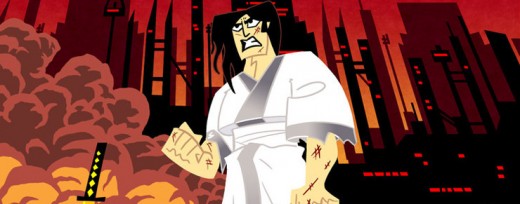
Samurai Jack
By the way, there’s a good interview with Tartakovsky on this week’s on-line version of the Village Voice.
Books
.
- There are a couple of books I’d like to write about.
.
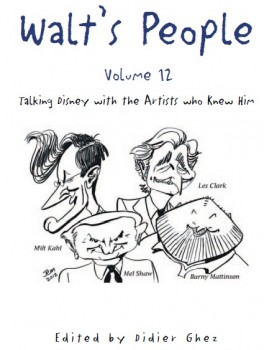
- Let me mention Didier Ghez‘ latest volume of his interview series, Walt’s People.
Just released is Walt’s People – Vol. 12. Just the idea of 12 volumes of any book in print, is quite extraordinary, and amazing feat for Didier Ghez to pull off.
I own about a half dozen of this series and have read all of them at least twice. Most of the interviews are exceptional, some are smart, and the rest are just very good. In all there are those interviews that give us some real insight into the process and history of the making of animated films by the professionals who did it. Les Clark, Larry Clemmons, Charlie Downs, Al Eugster, Sammy Fain, Milt Kahl, Burny Mattinson, Paul Murry, and Mel Shaw are among the many who are interviewed in depth for this new volume. Some of our greatest historians (Robin Allan, Michael Barrier, Albert Becattini, John Canemaker, John Culhane, Pete Docter, Chris Finch, J.B. Kaufman, Jim Korkis, Dave Smith, and Charles Solomon among others) conduct the interviews.
It’s just another great volume in the series. You should own them all; I should own them all, to be honest, and I will.
Ganesha’s Sweet Tooth
- As previously reviewed on this blog, Sanjay Patel will see his first children’s book, Ganesha’s Sweet Tooth released this week by Chronicle Books. I have a sore spot for Mr. Patel’s work. He’s an artist who works by day at Pixar and is an artist, with his own very defined style, working extensively after hours.
I’ve reviewed many of his books and have a real fondness for The Ramayana. Were I you, looking to explore this artist’s work, I’d buy Ganesha’s Sweet Tooth. Once you have it and want more – you will – go for The Ramayana. It’s a brilliant masterwork.
Snow White x 2
- Unless you’ve been hiding under a rock, if you’re an animation fan, you know that the brilliant historian, J.B. Kaufman, has not one but TWO books on Snow White about to appear on the market.
The Fairest One of All: The Making of Walt Disney’s Snow White and the Seven Dwarfs and
Snow White and the Seven Dwarfs: The Art and Creation of Walt Disney’s Classic Animated Film
are the two titles by Kaufman that focus in great depth on that film and its development. This is to celebrate the 75th anniversary of the feature, and will coincide with a display that will appear soon at the Walt Disney Family Museum in San Francisco.
Both books come from the Walt Disney Family Foundation in conjunction with the Walt Disney Family Museum. I’ve seen the Art of Creation book, and was completely taken with it. I will most definitely own both books. The film means much to me, and I want to own anything Kaufman writes. It’s a no-brainer – double my pleasure.
By the way, part of the reason I’m looking forward to reading these two books is to compare it with Michael Barrier‘s amazing writing on this period at Disney’s studio. In Hollywood Cartoons, there’s a large part of the book dedicated to the development andcreation of this particular film. Then in The Animated Man: A Life of Walt Disney Barrier tells the same information but from a different perspective entirely. This biography of Disney is wholly involved with Walt Disney, the man and artist. It’s a unique turn that we only see in the poorly written Diane Disney Miller book, The Story of Walt Disney. As Walt’s young daughter she could see the story no other way than from his perspective. While waiting for the Kaufman books to come out, read either of Barrier’s books for the best, to date, version of the Snow White story. It’s strong writing.
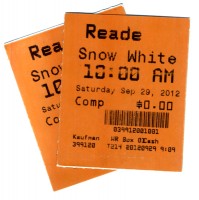 It’s appropriate that I was invited to a 10am screening of Snow White at Lincoln Center this morning. It’s part of the NY Film Festival’s 50th anniversary celebration. Eric Goldberg introduced the film with a brief and smart little talk about the animation. Talking about The Old Mill as a test run for the Multiplane Camera, talking about the Three Little Pigs first offering characters that looked alike but had characterization defined by their animation (as did the dwarfs), talking about The Goddess of Spring being an enormous failure for Ham Luske who succeeded animating Snow White. It was nice to say hello to Eric prior to the film. We haven’t seen each other in about five years. It was nice also to see the film projected. I saw the movie on tv/dvd only a couple of weeks ago, but it’s a very different experience on the big screen. The digital transfer was glorious, merciless and disastrous. The ink lines were so sharp that you could actually feel how deeply the crow quills cut into the cels. However there were many points where individual frames had slight digital distortion to hurt the ink lines, and the magic mirror actually had the detritus of digital compression across the center of the mirror. Someone should have been there to supervise the transfer.
It’s appropriate that I was invited to a 10am screening of Snow White at Lincoln Center this morning. It’s part of the NY Film Festival’s 50th anniversary celebration. Eric Goldberg introduced the film with a brief and smart little talk about the animation. Talking about The Old Mill as a test run for the Multiplane Camera, talking about the Three Little Pigs first offering characters that looked alike but had characterization defined by their animation (as did the dwarfs), talking about The Goddess of Spring being an enormous failure for Ham Luske who succeeded animating Snow White. It was nice to say hello to Eric prior to the film. We haven’t seen each other in about five years. It was nice also to see the film projected. I saw the movie on tv/dvd only a couple of weeks ago, but it’s a very different experience on the big screen. The digital transfer was glorious, merciless and disastrous. The ink lines were so sharp that you could actually feel how deeply the crow quills cut into the cels. However there were many points where individual frames had slight digital distortion to hurt the ink lines, and the magic mirror actually had the detritus of digital compression across the center of the mirror. Someone should have been there to supervise the transfer.
Paperman played prior to Snow White. It was animated cgi, then flattened and lines were added atop the flattened drawings. I can’t for the life of me understand why it wasn’t just animated by hand. It would have cut the cost in half and had more life to it. Sorry, I don’t think it worth the Oscar. Though you never know it may be the best film, this year.
Tales of the Night
- Michel Ocelot has received another excellent review from the NYTimes. Tales of the Nightis reviewed by Andy Webster in the Times, and is Ocelot’s latest feature length animated film – his first in 3D – and the reviews are sensational. It’s screening as part of the Children’s International Film Festival and plays at New York’s IFC Theater through next Tuesday. This is a silhouette film in brilliant color.
His films are beautiful and deserve to be seen in a theater. I’d heartily recommend getting to the theater if you have the chance. Hopefully the distributor will submit this one for Oscar consideration. Though the look is 2D, the graphics are done via cgi as was the case with his past films, including Azur & Asmar, Kirikou et les betes sauvages, Princes and Princesses, and Kirikou and the Sorceress.
Some amazing animation is coming out of France these days.
More Reviews
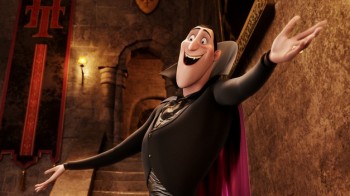 Now to the bigger release for the smaller film department:
Now to the bigger release for the smaller film department:
Adam Sandler‘s second animated feature, Hotel Transylvania, opened to mostly poor reviews by 2nd string reviewers.
NYTimes sent Neil Genzlinger to give his negative review. The most positive line is: “The movie loses its originality as it rolls toward its predictable conclusion, but it’s still lovely to look at.”
Someone named Sara Stewart reviews the film for the NYPost and gives it a middling 2½ stars. “Director Genndy Tartakovsky (“The Powerpuff Girls,†“Samurai Jackâ€) is a natural fit for this kid-and-parent-friendly flick. The animator’s wit and attention to detail enliven a collection of well-known ghosts and ghouls. (Though Tartakovsky’s more traditional TV-cartoon style is still superior, as evidenced by his playful closing credits.)”
Joe Neumaier, the 2nd rate first stringer of the NYDaily news gave it a mostly positive 3 star review. “This being a Sandler movie, the humor skews toward the infantile (fart jokes, peeing baby werewolves). But the sleek visuals are rich and glossy, placing the characters, who look like Halloween door decorations, in baroque hallways or secret passageways.”
I enjoy the reviews in The Onion, and their review for this film by Tasha Robinson doesn’t disappoint. A C+: “Tartakovsky gets a long way on wild design and visually daring sequences. His work has always been adventurous, experimental, and conceptually creative, and he hasn’t lost any of his energy or capacity for staging a memorable setpiece.”
Whatever happened to the feature length version of Samurai Jack that J.J. Abrams was going to produce wth Tartakovsky directing?
Animation &Disney &Peet &Tytla 10 Sep 2012 05:10 am
Dumbo Takes a Bath
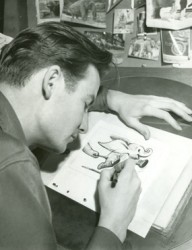 - Bill Peet was a masterful and brilliant storyboard artist. Every panel he drew gave so much inspiration and information to the animators, directors and artists who’ll follow up on his work.
- Bill Peet was a masterful and brilliant storyboard artist. Every panel he drew gave so much inspiration and information to the animators, directors and artists who’ll follow up on his work.
This is the sequence from Dumbo wherein baby Dumbo plays around the feet of his mother. Brilliantly animated by Bill Tytla, this sequence is one of the greatest ever animated. No rotoscoping, no MoCap. Just brilliant artists collaborating with perfect timing, perfect structure, perfect everything.
Tytla said he watched his young son at home to learn how to animate Dumbo. Bill Peet told Mike Barrier that he was a big fan of circuses, so he was delighted to be working on this piece. Both used their excitement and enthusiasm to bring something brilliant to the screen, and it stands as a masterpiece of the medium.
Of this sequence and Tytla’s animation, Mike Barrier says in Hollywood Cartoons: What might otherwise be mere cuteness acquires poignance because it is always shaded by a parent’s knowledge of pain and risk. If Dumbo “acted” more, he would almost certainly be a less successful character—”cuter,” probably, in the cookie-cutter manner of so many other animated characters, but far more superficial.
I had to take the one very long photstat, on loan from John Canemaker, and reconfigure it in photoshop so that you could enlarge these frames to see them well. I tried to keep the feel of these drawings pinned to that board in tact.
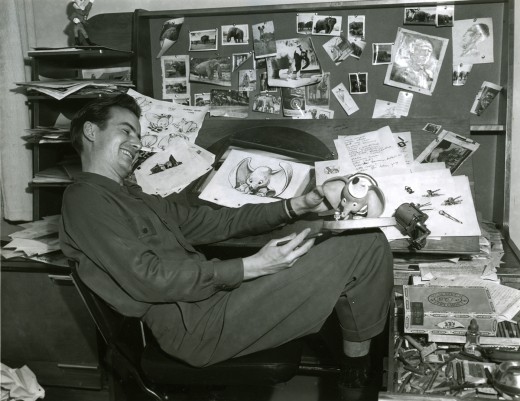
Bill Peet at his desk on Dumbo.
_______________________________________________
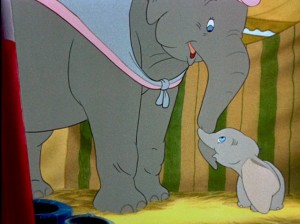 I think this sequence where Dumbo gets washed by his mother and plays around her legs is one of the greatest ever animated. There’s a sweet tenderness and an obviously close relationship between baby Dumbo and his mother which is built on the back of this sequence. It not only establishes both characters solidly, without words, but it sets up the mood of everything that will soon happen to the pair during the remaining 45 minutes of the film. Without that established bond, the audience wouldn’t feel so deeply for the pair during the “Baby Mine” song or care so much about Dumbo’s predicament.
I think this sequence where Dumbo gets washed by his mother and plays around her legs is one of the greatest ever animated. There’s a sweet tenderness and an obviously close relationship between baby Dumbo and his mother which is built on the back of this sequence. It not only establishes both characters solidly, without words, but it sets up the mood of everything that will soon happen to the pair during the remaining 45 minutes of the film. Without that established bond, the audience wouldn’t feel so deeply for the pair during the “Baby Mine” song or care so much about Dumbo’s predicament.
Tytla has said that he based the animation of the baby elephant on his young son who he could study at home. Peet has said that Tytla had difficulty drawing the elephants and asked for some help via his assistant. There’s no doubt that both were proud of the sequence and tried to take full credit for it. No doubt both deserve enormous credit for a wonderful sequence. Regardless of how it got to the screen, everyone involved deserves kudos.
Here are a lot of frame grabs of the sequence. I put them up just so that they can be compared to the extraordinary board posted yesterday. Both match each other closely. Whereas the board has all the meat, the timing of the animation gives it the delicacy that would have been lost in a lesser animator’s hands, or, for that matter, in a less-caring animator’s hands. The scene is an emotional one.

(Click any image to enlarge.)

Bill Peckmann &Books &Illustration 29 May 2012 06:28 am
Reynard the Fox
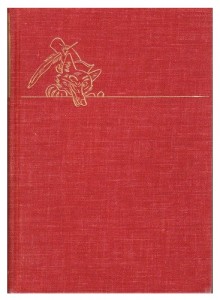 - Here are illustrations by Keith Ward from the book, Reynard the Fox, which was published in 1945.They are outstanding illustrations from an artist whose every work seems to be outstanding. These were sent to me by Bill Peckmann, and this is what he wrote to accompany the scans:
- Here are illustrations by Keith Ward from the book, Reynard the Fox, which was published in 1945.They are outstanding illustrations from an artist whose every work seems to be outstanding. These were sent to me by Bill Peckmann, and this is what he wrote to accompany the scans:
- Here are Keith Ward’s illustrations from ‘Reynard the Fox’. And beauties they are, all
35 of them! For me, being very partial to the Caniff/Sickles school of cartoon/illustration, these fall right into that wonderful 1940′s category and it makes me wonder if Milt or Noel could have been as facile with animals as Keith Ward was.
A couple of side bonuses, and they are this, the drawings have the same realistic cartoon playfulness that illustrators Jack Davis and Wally Tripp infuse in their art and you’ll get to see foxy Reynard’s influence and inspiration that found its way into Disney’s ‘Robin Hood’ feature. (Turn to Will Finn‘s July 22, 2007, excellent “expose” blog for that story!)
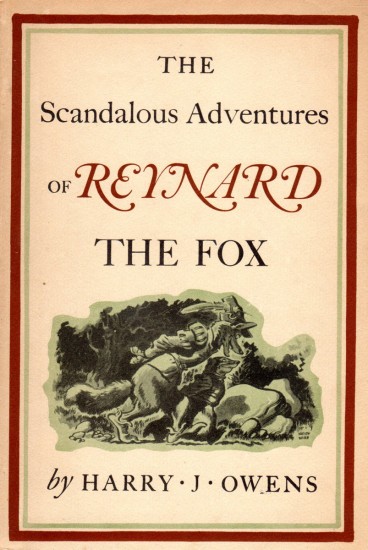 1
1
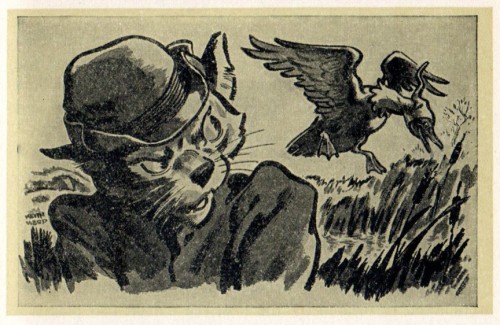 7
7
This, to me, is a GREAT illustration. Brilliant work in a book.
Marc Davis spent a lot of emotional weight developing the story for a feature to be called Chanticleer and the Fox (Andreas Deja has a wonderful posting on his site about this film.) This film combined the stories of Chanticeler the Rooster (Chaucer) and Reynard the Fox (Rostand). Disney opted to bypass this film to make the story that was developed by Bill Peet, Sword in the Stone.
Thanks again to Denis Wheary for lending us his Keith Ward book!
And thanks to Bill Peckmann for scanning and sending and getting the copy from Dennis.
Animation &Animation Artifacts &Disney 08 Feb 2012 07:24 am
Roger – Scene 45 – part 3
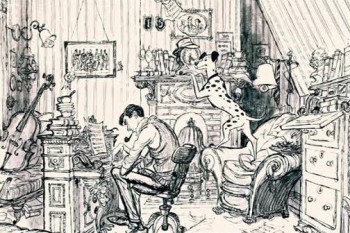 - Here is the final part of Scene 45 from 101 Dalmatians as animated by Milt Kahl. When this scene was loaned to me, it took less than a mezzo second for me to recognize it. I love it and have studied it frame-by-frame off the video (first a VHS then the DVD) many times. It’s a seminal scene for me. Just gorgeous.
- Here is the final part of Scene 45 from 101 Dalmatians as animated by Milt Kahl. When this scene was loaned to me, it took less than a mezzo second for me to recognize it. I love it and have studied it frame-by-frame off the video (first a VHS then the DVD) many times. It’s a seminal scene for me. Just gorgeous.
I’ve always loved the first fifteen to twenty minutes of Disney features (at least up
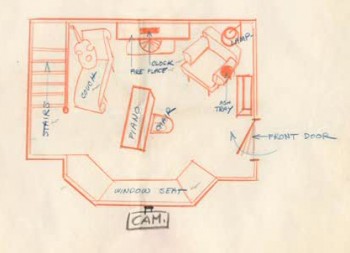 through Sword in the Stone.) Their intelligent introductions of principal characters usually comes in those first few minutes, and it’s always done with class. I think of Pinocchio, Gepetto, and Jiminy Cricket or Dumbo’s birth or Lady as a puppy or Bambi’s birth and discovering the world of the forest or Peter and Tink meeting the Darling children and “Off to Neverland.” These moments are thrilling to me, and usually the rest of the film doesn’t hold up to this.
through Sword in the Stone.) Their intelligent introductions of principal characters usually comes in those first few minutes, and it’s always done with class. I think of Pinocchio, Gepetto, and Jiminy Cricket or Dumbo’s birth or Lady as a puppy or Bambi’s birth and discovering the world of the forest or Peter and Tink meeting the Darling children and “Off to Neverland.” These moments are thrilling to me, and usually the rest of the film doesn’t hold up to this.
101 Dalmatians doesn’t fail to deliver in this respect. Exposition and introduction are done so beautifully.
The animation is, for the most part, on twos. There are a couple of ones at the very end ot the scene as Roger shakes his wrist. If you want to visit the first two parts go here for Part 1 or here for Part 2.
We start today with the last drawing from the second post.
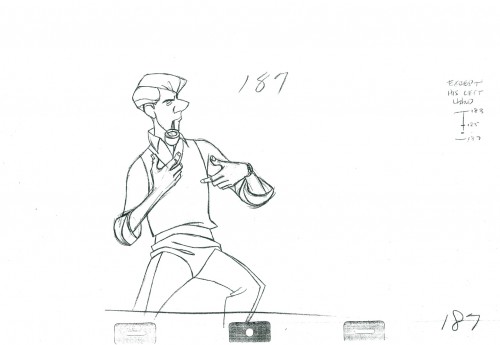 187
187
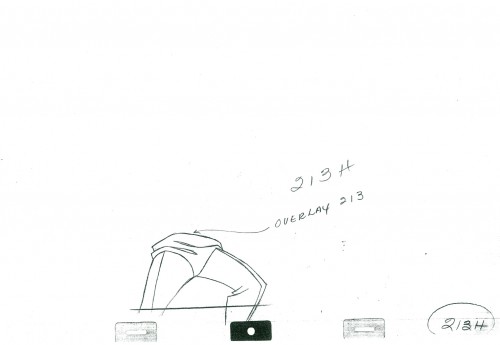 213H
213H
The legs move to their own level at this point.
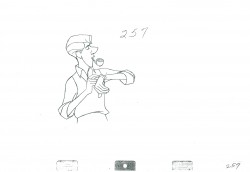
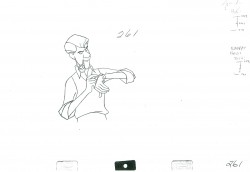
A drawing is skipped here (to be inbetweened.)
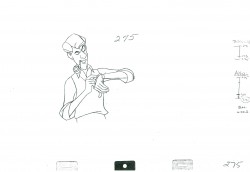
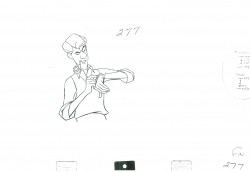
A drawing is skipped, needs inbetweening.
______________________
The following QT includes the entire sequence
which includes all drawings posted.
The registration is a bit loose. Sorry but, these are copies of
copies and there’s plenty of shrinkage.
If you click on the right side of the lower bar
you can watch it one frame at a time.
.
For more on 101 Dalmatians check out the animator drafts on Hans Perk‘s great and resourceful site, A Film LA. Hans has also posted Bill Peet‘s story treatment for the film several years ago. See it here.
For a look at the art direction of the film including some beautiful reconstructions of the BGs as well as some of the BG layouts go to Hans Bacher‘s great site One1More2Time3.
Andreas Deja has one of the more extraordinary blogs to visit. He just posted some beautiful drawings by some of the key animators on 101 Dalmatians as they set about to find the characters. See them here as well as a comparison of Milt Kahl‘s characters against Bill Peet‘s version. here
For those who own Fraser MacLean‘s excellent book, Setting the Scene, you’ll know that on pages 182-188 there’s an extensive discussion of this opening sequence from the film with plenty of beautiful images of the set.

